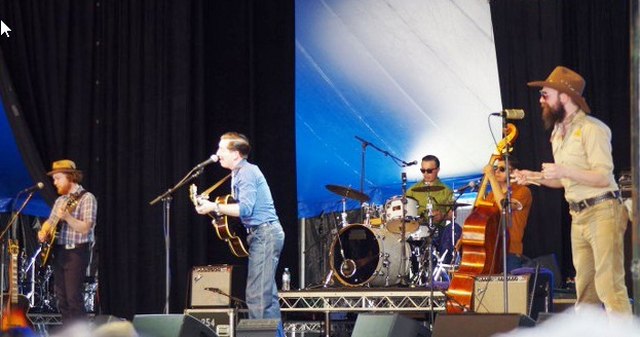Jeremy Rose Quartet - Sand Lines
Chris Cody - Not My Lover
Stu Hunter - The Migration
David Ades - A Life in a Day
Kristin Berardi - Where or When
Jeff 'Tain' Watts - Blue Vol 1
Nick Freer - The Unsuspecting
Joshua Hatcher - Now and Then
Paul Grabowsky and Niko Schauble - Spiel
Paul Grabowsky and Vince Jones - Provenance
Tim Garland - Return to the Fire
Eternal - Chris McNulty
Frances Madden - If This Were a Dream
Orbiturtle - Sakura (Studio Songs
Cecile McLorin Salvant - For One to Love
Sydney Jazz Orchestra - Nothing Personal
James Whiting - Hard mince
Gary Daley - Sanctuary
Aaron Diehl - Space Time Continuum
Tim Willis and The End - Night and Day
Robert Burke - Power of the Idea
Joshua Redman - The Bad Plus
Tim Stevens - I’ll Tell You Later
Barney McAll - Mooroolbark
Angela Davis Quartet and Strings - Lady Luck
Geoff Kluke - Valley Road
John Raymond - Foreign Territory
Mike Nock and Roger Manins - Two-Out
Juliana Areias - Bossa Nova Baby
Allan Browne Quintet - Ithaca Bound
Francesca Prihasti - Night Trip
Myra Melford - Snowy Egret
Chris Potter Underground Orchestra - Imaginary Cities
Casey Golden Trio - Outliers
Jack DeJohnette - Made in Chicago
BluesFest 2015
Joe O’Connor Trio - Praxis
Matt McMahon - The Voyage of Mary and William
Vijay Iyer Trio - Break Stuff
Kenny Wheeler - Songs for Quintet
Tate Sheridan - Tate Sheridan
Nic Vardanega Quartet - Inverno
Penelope Sai - Some Kind of Dream
Marc Hannaford - Can You See With Two Sets of Eyes
Rafael Karlen - The Sweetness of Things Half Remembered
Ben Gurton Quintet - Prelude to a Scene
Josh Kyle and Sam Keevers - Songs of Friends
Tim Garland - Songs to the North Sk
Slowly Rolling Camera - Into the Shadow
Verneri Pohjola - Bullhorn
RichardHavers - Uncompromising Expression
2014 ARCHIVES:
Allira Wilson - Rise and Fall
Mark Turner Quartet - Lathe of Heaven
Paul Grabowsky - Solo
BLOW - Presence
Frode Haltli - Vagabonde Blu
Magnusson, Oehlers, Vanderwal - Paper Tiger
Calum Builder and Tate Sheridan - In Hiding
Mark Turner Quartet - Lathe of Heaven
Shol - Shol
Mike Nock Octet - Suite Sima
The Bad Plus - Inevitable Western
Wangaratta Jazz & Blues Festival 2014
Alex and Nilusha - Tales to Tell
Robert Burke with Kenny Werner - Do True
Kavita Shah - Visions
Keith Jarrett and Charlie Haden - Last Dance
Song Fwaa - Songs of No Guns For We Are Anomalous
Henri Peipman - 30. Detsember
Mathew Sheens - Untranslatable
Hammerhead - Mozaic
Penny King Quintet - Journey
Adrian Cunningham - Ain’t that Right! The Music of Neal Hefti
Tom Barton - Aspirations
Jex Saarelaht Trio - Liminal
The Hunters and Pointers - The Hunters and Pointers
Melissa Oliveira - In My Garden
Gwilym Simcock - Instrumation
Daniel Susnjar - Su Su Nje
Kim Lawson Quartet - Hey Day
The Nexus Project - First Light
Melbourne International Jazz Festival May 30–June 8, 2014
Java Quartet - Together
Paul Grabowsky Sextet - The Bitter Suite
Dizzy Gillespie - The Champ
Robert Davi - Davi Sings Sinatra
Eric Starr Group - Such is Life
BluesFest 2014
Sam Bates Trio - Backblocks
Ben Panucci Trio - Short Stories
James Greening - Greening From Ear to Ear, Tam O’Shanter Tales
Alex Stuart - Place to Be
Tilman Robinson - Network of Lines
Eamon Dilworth - Tiny Hearts
Bob Venier - Discovering You
Brendan Clarke - Stretch
Julian Curwin - The Mango Balloon Volume 3
Daniel Hunter - The Twentieth
Mike Rivett - Digital Seed
Quentin Angus – Perception
Alfredo Rodriguez - The Invasion Parade
Danilo Perez - Panama 500
Joe McEvilly with Movement 9 - Wings
Anton Delecca Quartet - The Healer
Sam Anning Trio - Sweethearts
Chet Baker - The Italian Sessions
Dexter Gordon - Blows Hot and Cool
Curtis Counce - Complete Studio Recordings
Peggy Lee - Mink Jazz
Lou Donaldson - Midnight Creeper
Ahmad Jamal - It’s Magic
Chris Poulsen Trio - David and Goliath
Anton Delecca Quartet - The Healer
Ross McHenry - Distant Oceans
Scott Hamilton and Dusko Goykovich - Tight But Loose
Elodie Sablier - Vertigo
Celine Rudolph - Metamorflores
Dusko Goykovich - 5ive Horns & Rhythm
Dusko Goykovich1 - Sambo Do Mar
Dusko Goykovich2 - Samba Tzigane
Red Prysock - The Best of Red Prysock
Scott Hamilton - Swedish Ballads
Pee Wee Ellis - Tenoration
Andrea Keller Quartet with Strings - Wave Rider
Divergence Jazz Orchestra - The Opening Statement
Paul Williamson - Connect Four
2013 ARCHIVES:
Janet Seidel and Friends - Far Away Places
Julien Wilson Quartet - This is Always; Swailing
Monash Art Ensemble (Australian Art Orchestra and Sir Zelman Cowen School of Music)
Simon Thacker's Svara Kanti - Rakshasa
Todd Hardy - Swings and Roundabouts
Captain Kirkwood - Theseus and The Minotaur
Wangaratta Jazz & Blues Festival 2013
Adam Katz - Adam Katz
Resurgence - Duende
States of Play - States of Play
Monash students & overseas artists. The Monash Sessions
Compass Quartet - Oneirology
Keith Jarrett Trio - Somewhere
Hannaford Tinkler and Barker - Faceless Dullard
Steve Newcomb Orchestra - Caterpillar Chronicles
The Vampires - Tiro
The New Cabal
Jonathan Zwartz - The Remembering & Forgetting of the Air
Angela Davis - The Art of The Melody
Yitzhak Yedid - Suite in Four Movements
Paper Plane
Leigh Carriage - Mandarin Skyline
Melbourne International Jazz Festival May 31-June 9 2013
Monique DiMattina - Nola's Ark
Tom Vincent Quartet - Just Enough
Tomasz Stankos New York Quartet - Wistawa
Neil Cowley Trio - The Face of Mount Molehill
Charles Lloyd and Jason Moran - Hagar’s Song
Cecile McLorin Salvant - Woman Child
The catholics - Yonder
Origami - Karaoke
Origami - The Usefulness of Art
Mike Nock and Howie Smith - Opal Dream
BLOW - Empathy
Kjetil Moster - Moster! Edvard Lygre Møster
Edouard Bronson - Intimate
Alex Stuart - Around
Jess Greens Bright Sparks - Tinkly Tinkly
Charmaine Jones and Mike Bevan - Still
Trichotomy - Fact Finding Mission
Phronesis - Walking Dark
Steve Barry - Steve Barry
Alister Spence Trio - Far Flung
Chris Potter - The Siren
Matthew Sheens - Every Eight Seconds
Marialy Pacheco - Spaces Within
Joseph Tawadros - Chameleons of the White Shadow
Ted Vining Trio - Live at PBS FM 1981
Nostalgia 77 - The Sleepwalking Society
Wayne Shorter - Without A Net
Dave Jackson Quartet - Cosmontology
Bobo Stenson Trio - Indicum
Wangaratta Jazz & Blues Festival 2012
Daramad - Daramad
Penelope Sai - Siana
John Surman - The Rainbow Band Sessions
Murphy's Law - Big Creatures and Little Creatures
Slumgum - The Sky his Own
2012 ARCHIVES:
Gregg Arthur - Unforgettable – A Portrait of Nat ‘King’ Cole
Conly, Harding, Jones, Taylor - Grass Roots
Mace Francis New York Nonet - Land Speed Record
Magnet - Magnet
Willow Neilson - Lightbulb Life
Wangaratta Jazz & Blues Festival
Moskus - Salmesykkel
Marc Johnson and Eliane Elias - Swept Away
The Andy Sugg Group - The Berlin Session
Abel Cross Quintet - Neo Bop
Diana Krall - Glad Rag Doll
Divergence Jazz Orchestra- Live at the Bald Faced Stag 29/7/12
Seaman Dan - Sunnyside
Sean Wayland - Slave to the Machine (Volumes 1 & 2)
Logic Live (Double DVD/CD)
Mike Nock and Laurenz Pike - Kindred
James Carter - After All
Tony Gould and Peter Petrucci - The Journey Home
Matthias Schriefl - Six, Alps & Jazz
Simcock, Garland, Sirkis - Lighthouse
Jacam Manricks - Cloud Nine
Sarah McKenzie - Close Your Eyes
Bernie McGann - Wending
Craig Scott Quintet - Timeline
Marialy Pacheco 11th August 2012 – Coffs Harbour
Phil Treloar - Of Other Narratives - tracings in the ground of. Collective Autonomy / Volume 3 - Primal Communication
Mike Stern - All Over the Place
Neneh Cherry and The Thing - The Cherry Thing
John Abercrombie Quartet - Within a Song
Josh Kyle - Possibilities
John McAlls Black Money - Alter Ego
Peter J Martin - Waltz for the Wicked
Lily Dior - Let's Talk About It
Wayne Krantz - Howie 61
Motion - The Drowned World
Renaud Garcia-Fons - Solo – The Marcevol Concert
Tim Stevens - Life's Undertow
Guy Strazz Quartet - Eastern Blues
Melbourne International Jazz Festival 2012
Daimon Brunton Quintet - Wha Sa Live
Tim Willis and The End - Keep Your Chin Up
Tim Clarkson - Evolution of Beauty
Vijay Iyer Trio - Accelerando
Esbjorn Svensson Trio - 301
Phronesis - Walking Dark
Melody Gardot - The Absence
Tony Gorman - Tony Gorman's Monday Club
Barney McAll - Graft
Skii Harvey - Bound by History
Sandy Evans and Friends with Guru Kaaraikkudi Mani and Sruthi Laya - Cosmic Waves
Buck Clayton - The Complete Legendary Jam Sessions: Master Takes
Dick Hyman Trio - You're My Everything
Trombone Shorty - For True
Jens Thomas - Speed of Grace
Ben Hauptmann - Yum Yum Tree RecordsCC
David Murray Octets - The Complete Remastered Recordings on Black Saint
Galaxstare - A Time, Times and Half a Time
David Ades & Friends - A Glorious Uncertainty
Tal Cohen Quartet - Yellow Sticker
Alfredo Rodriguez - Sounds of Space
Alex Pertout and Nilusha Dassenaike - Moments in Time
2011 ARCHIVES:
Benjamin Sanz Quintet - Mutation Majeure
Houston Person - So Nice
Compass - Ode to an Auto Rickshaw
The Vampires - Garfish
Charmaine Jones and Mike Bevan - A Small Hotel
Slide Albatross
Marc Hannaford - Ordinary Madness (Quintet) and Sarcophile (Trio)
Dave Brubeck Quartet - Their Last Time Out
Nicki Parrott - Can't Take My Eyes Off You
Keith Jarrett - Rio
Nick Haywood Quartet - 1234
Kellylee Evans - Nina
Ella Fitzgerald - S'Wonderful: Ella in Japan
Liam Burrows With John Morrison's Swing City - All of Me
Michael Feinstein - The Good Life: The Sinatra Project, Volume Two
Gadjo Guitars - L'Amour En Douce
Bridie King - Blue Ivories
Andy Sheppard, Michel Benita and Sebastian Rochford - Trio Libero
Maggie Britton - Ditto – Songs for Alexander
Christian McBride - Conversations with Christian
Phil Treloar - Of Other Narratives
Jeff Riley - Jazz Suite
Quentin Angus Quintet - Retrieval Structure
Robert Burke, Tony Gould, Tony Floyd and Nick Haywood - Live at Bennett's Lane
Mike Nock Trio Plus - Hear and Know
Peter Knight - Fish Boast of Fishing
Marialy Pacheco - Songs that I Love
Bucky and John Pizzarelli - Generations
Emma Grace Stephenson - Jazz Workshop AustraliaCC
Warren Vache and Bill Charlap - 2gether
Ella Fitzgerald - Live at Mister Kelly's
Cedar Walton - Voices Deep Within
Samurai Spirit - Ganbare Nippon
Warren Wolf - WW
Ella Fitzgerald - Best of the BBC Vaults
Rebecca Kilgore with Harry Allen Quartet - Live at Feinstein's: Celebrating Lady Day and Prez
Nick Hempton - The Business
James Whiting - Burbank
Keith Jarrett - Rio
Compass Quartet - Ode to an Auto Rickshaw
Darius Jones Trio - Big Gurl [Smell My Dream]
Memory of Elements - MoE
Laura Fygi - The Best is Yet to Come
"Buck" Pizzarelli and the West Texas Tumbleweeds - Back in the Saddle Again
Dave Ades & Friends @ Venue 505 (9/11/2011)
Wangaratta Festival of Jazz 2011
Sean Jones - No Need for Words
Peter Knight and Dung Nguyen - Residual
Takadimi - New Common Sense
Ingrid James & The Global Collective - Pangaea
Origami Trio - The Blues of Joy
The Andrew Dickeson Quintet - Weaver of Dreams
The Paul McNamara Trio - IndependentCC
Karrin Allyson - Round Midnight
Nicki Parrott and Ken Peplowski - Like a Lover
Rossano Sportiello Trio - Lucky to be Me
Stan Getz - The Clef and Norgran Studio Albums
Sherrie Maricle and The DIVA Jazz Orchestra - Johnny Mandel: The Man & His Music
Leonie Cohen Trio - Sideshow Pony
Cedric Hanriot - French Stories
Laura Kahle - Circular
Lee McAllistair - Spellbound
Adrian Cunningham - Walkabout
Sandy Evans Sextet - When the Sky Cries Rainbows
Mace Francis Orchestra - Chinese Whispers IV
Katie Noonan Elixir - First Seed Ripening
Matt Keegan Trio - Meets David Ades
Harold Lopez-Nussa Trio - El Pais de las Maravillas
Dan Barnett - Somewhere, Some Place, Some Time
Scott Hamilton and Rossano Sportiello - Midnight at Nola's Penthouse
Bill Charlap - I'm Old Fashioned
Duke Ellington - The Great Concerts: London & New York 1963-64
Melbourne International Jazz Festival 2011
Howard Alden - I Remember Django
Elly Hoyt - Pinnacle
Sarah McKenzie - Don't Tempt Me
Jeremy Pelt - The Talented Mr Pelt
My Goodness McGuiness - Insular Peninsula
Pascal Schumacher Quartet - Bang My Can
Browne, Hannaford, Anning - Shreveport Stomp
Cameron Earl Quartet - Run Run
Daniel Gassin Sextet - Which Way
Fran Swinn Trio - Every Dog
Joachim Kuhn, Majid Bekkas and Ramon Lopez - Chalaba
Portico Quartet - Knee-deep in the North Sea
Matt Baker - Underground
Luke Howard and Janos Bruneel - Open Road
The End - The End
Jason Moran and The Bandwagon - Ten
Briana Cowlishaw - When Fiction Comes to Life
Art Tatum - Solo Masterpieces
Allan Vache - Look To The Sky
Jacam Manricks - Trigonometry
Quinsin Nachoff - Forward Motion (FoMo)
Song Fwaa - Ligeti's Goat
Jane Monheit - Home
Bill Allred Featuring John Allred - The New York Sessions
Duke Ellington - From His Treasure Chest 1965-72
David Klein Quintet - My Marilyn
3ofMillions - Abstruction
BluesFest 2011
Amphibious - Alive & Breathing
Jane Irving - Beams
Tim Stevens Trio - Scare Quotes
James Osborne Jazz Collective - Playtime
Renaud Garcia-Fons - Mediterranees
Mark Isaacs's Resurgence Band - Aurora
Nicki Parrott - Black Coffee
"Buck" Pizzarelli and the West Texas Tumbleweeds - Diggin' Up Bones
Lew Soloff and Steve Richman - Sketches of Spain
2002-2010 ARCHIVES
|
Reviews
 
 
 -
masterpiece, -
masterpiece,
 
 -
excellent, -
excellent,
  - good
- good
 - fair, - fair, - poor - poor
To Search for reviews - Key CTRL+F and artist or album name
|  | Jeremy Rose Quartet - Sand Lines (Earshift Music)
|
Sydney saxophonist Jeremy Rose has been working with the musicians on his latest album for the past ten years, and these six lengthy pieces were developed over a two year period, but Rose is also very active in a variety of other groups: The Vampires, The Strides, Compass Quartet, Cameron Undy's 20th Century Dog, Ensemble Offspring, and Earshift Orchestra. Amongst numerous achievements Rose has scored a Bell Award, and this year won an APRA AMCOS Professional Development Award worth $15,000
The title track is a good introduction to the collection of originals, with Jackson Harrison's opening piano flourishes and the delectable upright bass notes of Alex Boneham – who's since relocated to Los Angeles – ahead of one of several themes stated by Rose's soprano sax with rhythmic punctuation from drummer James Waples. All of this serves as a build-up intro for Rose's lift-off solo of swirling excitement aided by Harrison's substructural chord stabs, before a curling piano solo travels on with ceaseless invention
Guitarist Carl Morgan is a guest artist on two tracks including The Long Way Home, a slow ballad that wanders expressively adding rhythmic accents for appropriate solos from alto and guitar. Mind Over Matter is a soft post-bop tribute to the late altoist David Ades, 'a mentor, friend and fellow surfer' for Rose
Rose explains that the music uses improvised sections that build from the notated material, 'creating a blurred line between improvisation and composition', and he has assembled a group of players perfectly capable of understanding and interpreting these elegant works
    
|
John McBeath
Previously published in The Australian Dec 2015 |
| Back to Index |
| 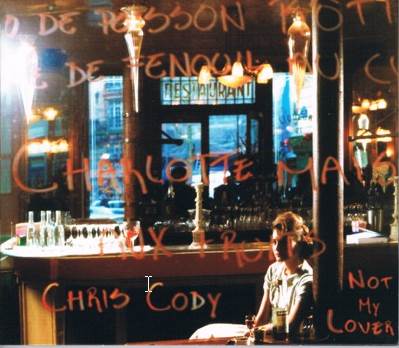 | Chris Cody - Not My Lover (Wave)
|
Australian pianist/composer Chris Cody spent 25 years based in Paris, recording nine albums and playing extensively throughout Europe often with outstanding international musicians, composing music for films and TV, and garnering many awards and accolades
Cody returned to settle in Sydney in 2014 and this quartet recording is his first release since. Although a confirmed jazz performer Cody has long had an association with classical music, playing solo and chamber music: he was a finalist in the Roger Woodward Piano Scholarships at age 14, and studied with composer Peter Sculthorpe, as well as at London's Trinity College. It's not difficult to trace classical influences in the new collection of ten tracks, of which eight are originals
For an avowed Francophile, Cole Porter's I Love Paris is probably a necessity and Cody works over the overworked standard with flair and sensitivity in a trio context with adept drum work from James Waples and Brendon Clarke on bass
The title track is a moody ballad with Karl Laskowski on tenor – he's on seven numbers – beginning in a slow tempo and cranking up to a medium groove as Laskowski leans right into the piece with fast runs and strong staccato notes as Cody supplies the foundation before breaking into a flowing solo
Scatter is a post-bop theme whose bluesy overtones are explored by both tenor and piano and abetted by Waples's astute kit work
This is an album of talented performers playing varied compositions, adding an unusual jazz piano style that incorporates interesting classical ideas and flourishes
   
|
John McBeath
Previously published in The Australian Dec 2015 |
| Back to Index |
| 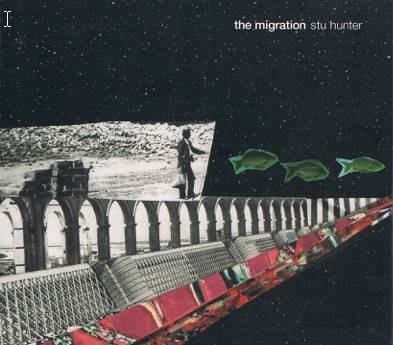 | Stu Hunter - The Migration (Habitat)
|
Sydney pianist/composer Stu Hunter produced a widely acclaimed, comprehensive work for quartet in 2007 The Muse, followed by an equally expansive and highly regarded suite for sextetThe Gathering, showcased to universal praise at the Wangaratta Festival of Jazz and Blues in 2010
Now comes a worthy successor to those earlier pieces and in some ways a continuation of them: a 74 minute musical odyssey for octet, in nine parts entitled The Migration, due to be launched at the Sydney Festival on Saturday January 9th
As with the earlier compositions this latest work achieves an almost symphonic form in its structure, using illustrative, sometimes orchestral-style formats, mood variations, and a thematic/melodic continuity all within a highly individualised jazz context
The opener, Dawn Chorus begins with a soft clock-like beat, overlaid with a pacifying ensemble theme that sounds vaguely classical even after Cameron Undy's electric bass riff and Simon Barker's drums pick up the rhythm. Led by Phil Slaters's trumpet the ensemble's melody wanders against the insistent fast rhythm drums and bass, giving way to the deep muttering of Julien Wilson's bass clarinet conclusion
A variation of the opener's infectious rhythm continues in track two Eagle Fish, with a strong piano pattern leading the ensemble as Matt Keegan's baritone sax breaks into a raucous rollicking solo, followed by the piano's ongoing building bounce and excited stabbing chords from the group's voicings to conclude with a brilliant solo electric bass passage
Three of these nine movements feature a solo vocalist: two by Tina Harrod and one from Katie Noonan. In each of these arrangements the voice is treated as a solo instrument and the poetically abstract lyrics – also by Hunter – are supplied in the cover notes. Twelve Stages of Freedom features an ethereal Noonan with her astonishing range, adding a high-treble duet with the clarinet of Julien Wilson, who also provides a solo
One of Harrod's two contributions, MDU Moonshine has a New Orleans soul element that fits well with her vocal style and features a blast-off trombone solo from James Greening, another on alto clarinet by Matt Keegan plus Carl Dewhurst's wailing guitar, while Hunter's piano punches a near-boogie ostinato along underneath throughout
The closer Land of Gypsies, clearly influenced by the broad genre of European Gypsy music, makes good use of James Greening's tuba establishing a Romany groove along with Hunter's travelling piano, while Dewhurst's lift-off guitar solo reaches into Pat Metheny territory against speeding piano and classical high-note flourishes from clarinet and tenor sax
High praise is due to Hunter for this third edition of his extensive compositions and for his vigorous piano work on the recording, and also for the seven other top level musicians and two outstanding vocalists who've interpreted this monumental work
    
|
John McBeath
Previously published in The Australian Dec 2015 |
| Back to Index |
|  | David Ades - A Life in a Day (Lionshare Records)
|
It’s hard to imagine a more poignant recording than this final album from British-born, Australian saxophone giant David Ades (5/10/61 – 8/11/13) even before the outstanding compositions and musicianship are experienced
Against medical advice and suffering a terminal condition Ades flew to New York in August, 2013 to record one last album with the same US personnel from his 2012 album, A Glorious Uncertainty
Ades’s sister Ruth records that he composed tunes for the album every afternoon, overcoming terrible pain: ‘. . . for David, a churning, insuperable will to create music always trumped reason .’ The album was recorded in one five hour session on September 18th 2013
Due to the background of this album and its sheer musical force it’s impossible not to be profoundly moved by it
Thanks are due to Melbourne saxophonist Julien Wilson who played a central role in packaging and releasing the album on his own label
The opener Slow Song features a cadenza of Ades’s alto sax with just Mark Helias’s bass and Gerald Cleaver’s brushwork as the alto soars and leaps for over three minutes before Tony Malaby’s tenor joins in for the two horns to drawl a seductively lazy theme
A brighter tempo pervades Removab with the two saxes interweaving powerfully, while Arco and Alto, true to its title begins with just bowed bass and alto, out of tempo in a mysterioso duet, moving into a rhythmic section with plucked bass, eventually joined by the tenor
This might well qualify as the jazz album of the year
    
|
John McBeath
Previously published in The Australian November 2015 |
| Back to Index |
| 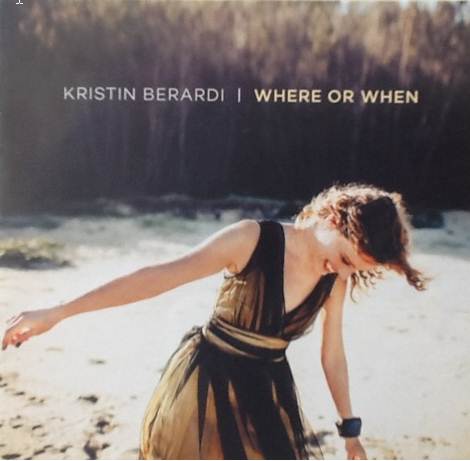 | Kristin Berardi - Where or When (ABC/Universal)
|
Brisbane-based vocalist Kristin Berardi has won numerous awards, released six albums with various bands, and since 2011 has often appeared with guitarist James Sherlock who joins the quartet backing on this latest album. Four of the ten tracks are Berardi originals
The perfect pairing of vocalist and guitar is softly demonstrated in Leonard Cohen’s Suzanne, while Steve Newcomb’s piano takes the major accompanying role quietly supported by Sam Anning’s bass and Sherlock’s guitar in Mel Tormé’s sorrowful Born To Be Blue
The title track and opener, Where or When is a medium-tempo standout with Berardi wisely not attempting to imitate any of the hundreds who’ve also recorded this Rogers and Hart standard. She gives the song her own phrasing interpretation and prudently allows solo space for guitar and Julien Wilson’s nimble and scintillating tenor sax
Pat Metheny’s unusual and challenging melody Unity Village is given lyrics by Berardi and begins eloquently with vocal and guitar as bass and piano join to support the high-climbing, swooping theme
The standard Cool Baby features a series of solos by piano, guitar, sax, bass and vocalist where each picks up an end phrase from the previous instrument and drives it further, Berardi scatting her contribution
The solo vocal opening to Young at Heart demonstrates this mature vocalist at the very top of her craft. The album also illustrates just how well a quartet of foremost musicians can work with and supply breadth and depth both behind and alongside a vocalist
   
|
John McBeath
Previously published in The Australian November 2015 |
| Back to Index |
| 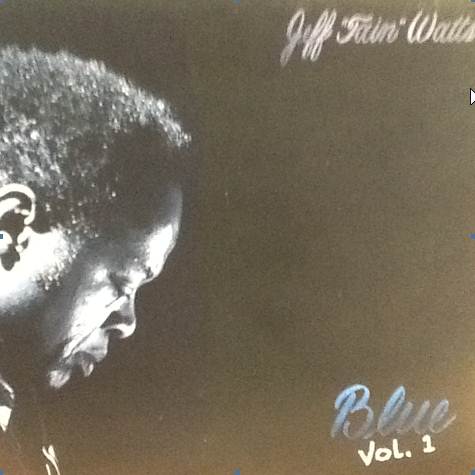 | Jeff 'Tain' Watts - Blue Vol 1 (Dark Key Music)
|
These nine tracks feature groups of varying size and instrumentation led by US drummer Jeff 'Tain' Watts and recorded in the drummer's home state, Pennsylvania. Best known for his 24 year long association, until 2009, with the Branford Marsalis Quartet, Watts has played with a wide range of top names including, Michael Brecker, Terence Blanchard, Kenny Garrett, Wynton Marsalis, Ravi Coltrane, McCoy Tyner, and won many awards including six Grammys.
Watts writes most of the material for the recordings on his own label, Dark Key Music,and has penned six of the tracks. One of the exceptions is the opener, Thelonious Monk's Brilliant Corners arranged in altering tempos by Watts for a quartet with saxophonist Troy Roberts, pianist David Budway, and bassist Neale Caine. Beginning with a heavy backbeat the opening track slides into a slow, bluesy phase with smart tenor work from Roberts and continues alternating tempos for Robert's thoughtfully swinging phrases, giving way to equally robust piano sequences, and always with Watts's energising rhythms
Farley Strange brings on an octet plus seven vocalists, including Watts's wife Laura. This mix of voices starts up mentioning 'Gumbo' – a New Orleans dish and type of blues marching music – before launching a version of the music complete with tuba, vocal choruses, solos, and a driving beat from Watts
The closer reverts to the opening quartet for another Watts composition, Reverie a slow ballad with lyrical work from Roberts's tenor, pensive piano, and Watts working the brushes to great effect
   
|
John McBeath
Previously published in The Australian November 2015 |
| Back to Index |
|  | Nick Freer - The Unsuspecting (Independent)
|
Australian guitarist Nick Freer has taken a turn in the direction of fusion, the rock and jazz hybrid, with his latest release The Unsuspecting. That turn is with a juicy atonal twist, by his approach to harmony with the composer Schoenberg strongly in mind. The challenge of melodic atonality or melodic post tonality, is really in the ear of the beholder and I suspect this will be a challenging listen for both mainstream jazz and mainstream rock listeners but very exciting for listeners seeking super-charged sounds made even more visceral than The Subterraneans or Mark Costa’s Textures. Make no mistake, Freer’s playing is impressively agile and refreshingly original, while the thrust of these originals is driven by master drummer Andrew Gander. Freer the composer, is joined by Sean Wayland who adds his talent to three originals in meter signatures made even more jagged in the hands of Gander. Carlo Barbaro is on saxophone and bass clarinet, as is bassist Matt Clohessy and Phil Turcio also on keyboard. Metheny, Corea and Holdsworth fans take note
   
|
Peter Wockner
|
| Back to Index |
| 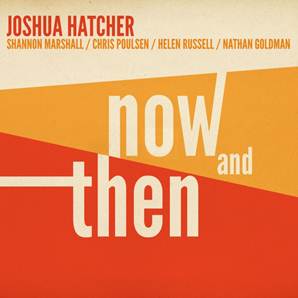 | Joshua Hatcher - Now and Then (Independent)
|
If you, as I did, enjoyed the debut albums by trumpeter Warwick Alder and bassist Craig Scott on Rufus Records, then you’ll enjoy the debut release by Brisbane based saxophonist Joshua Hatcher. The original compositions by the tenor player hark back to the late 1950’s and 1960’s Blue Note era. Authentic original composing influenced by a by-gone era or exclusively written for the classic jazz quintet instrumentation of the period, is a rare pursuit for very few Australians, making this quite an ambitious offering. Joining him on the outing is a talented band made up of Shannon Marshall on trumpet and flugel, Chris Poulsen on piano, Helen Russell on bass and Nathan Goldman on drums. Hatcher’s compositions are well crafted contemporary visions on an era of jazz that almost all lovers of the music enjoy. His easy but assured tenor sound is darker and contemplative rather than piercing and suits these relaxed medium tempo swinging pieces. ‘Succession’ has embellished harmonies reminiscent of Horace Silver, while ‘Forgotten Languages’ is darker and Tyneresque. ‘I’m Not Myself’ is Blakeyesque and displays both Marshall’s and Hatcher’s agility when needed in the front line. Much more than the sum of its parts, this group sounds like a seasoned band and Hatcher’s arrangements beautifully balance the scales by straddling ensemble playing, solo work and group interplay.
   
|
Peter Wockner
|
| Back to Index |
| 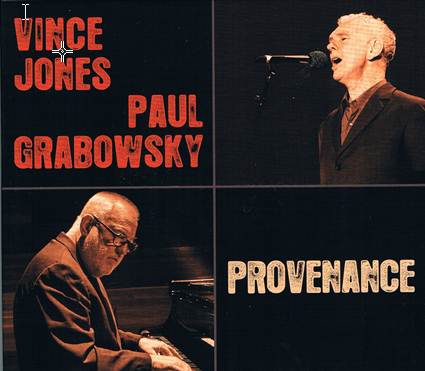 | Paul Grabowsky and Vince Jones - Provenance (ABC/Universal)
|
| |
| 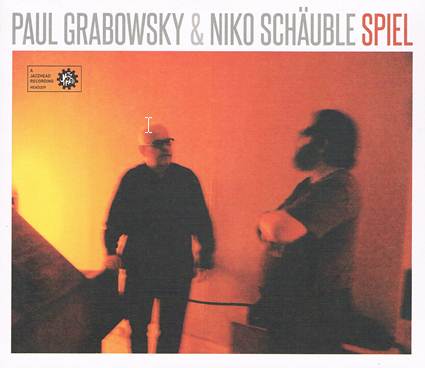 | Paul Grabowsky and Niko Schauble - Spiel (Jazzhead)
|
In terms of Australian jazz and piano/composition, the foremost name must be Paul Grabowsky. Although Melbourne-based Grabowsky seems to defy localization: he could be recording in New York, Europe, or Australia, recently gave concerts in Cairns, appeared at the Wangaratta Jazz Festival and toured nationally launching a new CD.
One of two new releases is a duo recording by Grabowsky with long term drumming associate Niko Schauble, The absence of bass or guitar in rhythmic numbers could put pressure on a pianist’s left hand, but Grabowsky coasts through 17 totally improvised pieces with matchless ease and ceaseless invention
Some tracks are almost out of tempo and flow in a semi-classical way as Schauble provides soft effects with brushes. Pieces with a pulse are provided with either a running single note bass line or rhythmic left hand chords, and drums fit perfectly
Provenance has Grabowsky accompanying long-established vocalist/trumpeter Vince Jones in a collection of ballads, several of which have lyrics by the vocalist. Some of Jones’s many fans – he’s sold over 200,000 albums – who might have suspected that the 61 year old was approaching his use-by date will be surprised at the vocal dexterity and expressive ability here. His delivery of the tricky melody in Stella by Starlight is passionately eloquent. The same applies to the Joabim original If You Never Come to Me, and Harry Warren’s This is Always. Of course Garbowsky’s sympathetic accompaniment is faultless throughout
These two new examples of Grabowsky’s mountainous work are both worthwhile additions to his fast-growing output, here in disparate duos with drums or vocalist
Spiel    
Provenance    
|
John McBeath
Previously published in The Australian Oct 2015 |
| Back to Index |
| 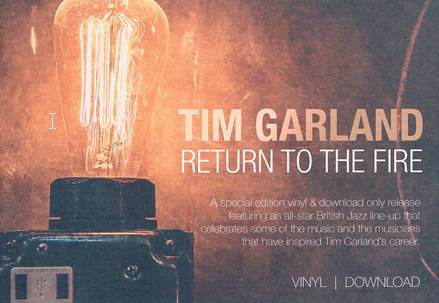 | Tim Garland - Return to the Fire (Edition/Planet (Vinyl & digital only))
|
This six track album from UK saxophonist Tim Garland marks the reunion of the original British band that recorded Enter The Fire in 1997. Garland has performed widely in the UK and toured internationally, occasionally with legendary pianist/composer Chick Corea, a continuing collaboration
None of the previous album tracks are repeated here but four of the numbers are Garland originals with the title song, a post-bop theme, taken at the liveliest tempo with driving solos from pianist Jason Rebello, Gerard Presencer on trumpet and Garland’s fast-leaping tenor
Taken at a slower pace the classic ballad Lament, by trombonist J. J. Johnson is a deliciously unhurried piece with an extended lyrical passage from Garland’s soprano sax with sympathetic piano backing
Garland also plays soprano on his composition Valse for Ravel where the theme features trumpet and soprano in a semi-classical duo with piano. Long considered a foremost performer on bass clarinet, Garland takes up that instrument for another of his originals, All Our Summers, executing some ingenious counterpoint with Ant Law’s guitar plus Rebello’s propulsive contributions on fender Rhodes
McCoy Tyner’s Search for Peace receives the ballad treatment it warrants with all the virtues of the swing and ethos of the sort of acoustic quintet celebrated in the Miles Davis bands, again with the fitting solo work of Garland’s tenor
In many ways this album pays homage to a potent time in jazz history with the classic sound of a sax and trumpet jazz quintet of yesteryear presented and updated by some of the UK’s top-flight musicians
   
|
John McBeath
Previously published in The Australian Oct 2015 |
| Back to Index |
| 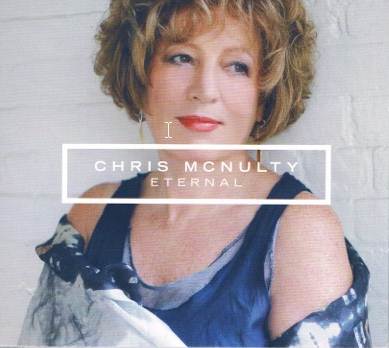 | Eternal - Chris McNulty (Palmetto Records)
|
There are two back-stories to this, the seventh album by Australian vocalist Chris McNulty who’s been New York based for almost 28 years. The most poignant is that the album celebrates the life of her son Sam – aka hip-hop artist/composer Chap One – who passed away in 2011. The singer notes that the time since that event has been the hardest of her life
The second point is that in an attempt to start afresh McNulty is moving back to Australia in October to reside in Melbourne
Eternal is a superb amalgamation of an award-winning vocalist, a chamber ensemble orchestrated by Brisbane pianist/arranger Steve Newcomb, and a jazz quintet, arranged and led by pianist John Di Martino who adds several appropriate solos
The songs are mostly classics, some not so well known, plus a McNulty original. The opener, The Saga of Harrison Crabfeathers is a not often heard song with perfectly suitable lyrics of lament exquisitely delivered, and includes a soft wordless passage: a deeply moving experience, as are all of these heartfelt songs
What Are You Doing The Rest of Your Life takes on an ethereal quality as the chamber ensemble of strings and woodwinds underscores McNulty’s elemental outpouring and Matt Jodrell’s trumpet brings a solo of cosmic intensity
Stardust; Nature Boy; On a Clear Day; Where Is Love; indeed all 12 of these songs are elegantly produced and sung with McNulty’s uniquely emotive vocal interpretation, including an impressive upper-register reach
This is an unforgettable collection of songs of sorrow but with a beauty that ultimately achieves a transcending quality
    
|
John McBeath
Previously published in The Australian Oct 2015 |
| Back to Index |
| 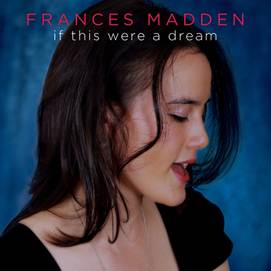 | Frances Madden - If This Were a Dream (Independent)
|
After a single sitting this album might seem like a light-hearted affair steeped in soft pop with some jazz inflections. Indeed it is an album worthy of broad airplay on smooth jazz stations if only for Madden’s ability to straddle both innocence and command on Bacharach and David’s This Girl’s in Love or the earthy groove of Wade in the Water, a tune successfully commercial for Ramsay Lewis in the 1960’s. Eight of these thirteen are Madden originals and they are impressive tunes suited to Madden’s pop vocal sensibility. The breathy Haunting Melody is a case in point, haunting and infectious. Madden’s talent stretches to piano and her jazz chops come into focus when she embellishes melodies or accompanies an impressive line-up including Ian Cooper and Ray Cassar. A versatile song-writer, Madden’s Summer’s Song could have been written in Tamworth such is its romantic twang. Frances Madden is a talent and this debut is sure to attract wide appeal
  
|
Peter Wockner
|
| Back to Index |
|  | Orbiturtle - Sakura (Studio Songs (Japan))
|
Sakura (Cherry Blossom) recorded in Japan by Studio Songs, a jazz label begun in 2009, initiates a collaborative project between Australia and Japan, and features a quartet with two musicians from each country. Pianist Steve Barry, saxophonist Dave Jackson and drummer Ko Omura all studied together at Sydney Conservatorium of Music and have been developing their creative concepts over several years. They’re joined by veteran Japanese bassist Yoshio Suzuki
Barry’s title track composition is the opener in an energetic 5/4 groove, providing a perfect vehicle for Jackson’s cerebral exploration on alto, supported by big, strong piano chords and Omura’s emphatic drum kit. Barry’s own solo swirls, weaves and flows spiritedly around the extended harmonies
Omura’s piece Lonely Specs is a waltz with a pretty melody on which Jackson’s alto floats beguilingly, leading into a fugue-like beginning of a piano solo which continues with ceaseless invention. Another of the drummer’s compositions, So Long opens with a solo piano cadenza before the main theme with its evocative minor third structure
Jackson has contributed two originals: Pirouette where the alto spirals and twirls as the title predicts, and Into Stellar in a slower tempo at first for the abstracted alto’s constructed flight ahead of the piano’s solo, increasing speed, and Suzuki’s inventive bass sequence
The closer, Codaesque, by Barry is a slow, twelve bar traditional bluesy number with another articulate bass solo and the ensemble otherwise staying on the expressive melody to conclusion
It’s a fine musical collection and an inspiring example of international jazz co-operation in performance and composition
   
|
John McBeath
Previously published in The Australian Sept 2015 |
| Back to Index |
| 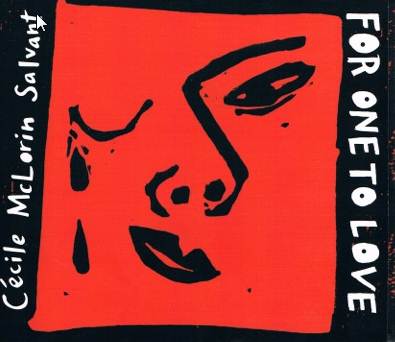 | Cecile McLorin Salvant - For One to Love (Mack Avenue/Planet)
|
US vocalist Cécile McLorin Salvant burst onto the jazz scene winning the 2010 Thelonius Monk Competition. She has a varied background: born and raised in Miami, Florida of a French mother and Haitian father, she moved to France in 2007 to study law as well as classical and baroque voice
This is her third album and as in Woman Child in 2013 – a Grammy nominee for Best Jazz Vocal – backing is led by the brilliant pianist Aaron Diehl. She’s appeared at various festivals and performed with a great many top jazz names. All this at just 25 years of age
McLorin Salvant specialises in unique interpretations of lesser-known and scarcely recorded jazz and blues compositions plus her own originals, often utilising jazz inflected theatrical portrayals
Five of the current twelve tracks are originals, including the opener Fog in a breathy vocal style perfectly depicting a misty scene ornamented by a suitably murky piano
Of the better known songs Stephen Sondheim’s Something’s Coming receives lengthy variegated vocal treatment with a compositional piano solo, a bass interlude from Paul Sikivie, and energetic support from drummer Lawrence Leathers. Judy Garland’s 1947 hit The Trolley Song gets a clever modernistic makeover, but also contains a salute to the original
What’s The Matter Now could easily slip into bluesy satire, but doesn’t because of McLorin’s superbly swinging phrasing and Diehl’s post-modern barrelhouse piano. Underling is a standout original with its multi-hued vocal expression and soft, high register leaps
Another very impressive album from a worthy successor to the Holiday/Vaughan/Fitzgerald lineage
   
|
John McBeath
Previously published in The Australian Sept 2015 |
| Back to Index |
| 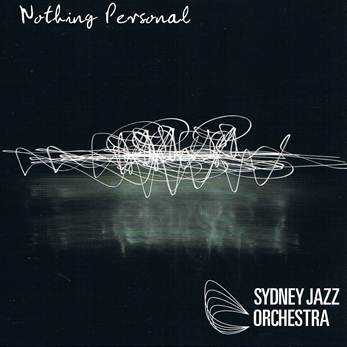 | Sydney Jazz Orchestra - Nothing Personal (Independent)
|
This 17 piece Sydney big band, led and arranged by saxophonist Tim Oram, features numerous high profile players and includes substantial solos, but never loses sight of its swing heritage, albeit in modernistic terms
The title track opener written by US pianist Don Grolnick opens with piano flourishes from Michael Azzopardi, and after ensemble passages moves into a swinging, fast flowing piano solo. Lead trumpeter Simon Sweeney contributes a solo in the same rhythms: half time, then a tempo doubling, a characteristic of the composition, before a call and response conclusion
An Oram original Too Funky For The Colonel is a shuffle-piece reflection of Oram’s time in a RAAF band and features Richard Maegraith’s funky spot-on tenor solo, as well as a trombone blast-off from Mark Barnsley and Tim Crow’s high-reaching New Orleans trumpet
John Coltrane’s Naima, begins introspectively with David Stratton’s mysterious out-of-tempo bass guitar proceeding into a Latin rhythm established by drummer Jamie Casistros for the large ensemble’s forceful statements and sympathetic solos from Maegraith and trumpeter Robert Campbell. A second Coltrane piece Impressions ceartainly has an impressive tenor cadenza by Craig Walters and strong ensemble arranging.
Shapes, an evocative piece by Sweeney includes a quick running tenor solo from Walters and the always engaging Azzopardi piano, plus alternating, sometimes overlapping section work between brass and reeds
Tim Oram’s impressive arrangements maintain a modern big band feel without straying into ‘out there’ territory, and employ interesting section playing. A range of material is ably delivered with more than a few notable solos
   
|
John McBeath
Previously published in The Australian Sept 2015 |
| Back to Index |
| 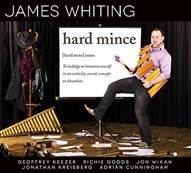 | James Whiting - Hard mince (Independent)
|
With the absence of recording contracts for jazz artists, crowd funding has become a worthwhile alternative for artists to attain 'buy in' by replacing a record company’s investment with consumers’ dollars. This is the vibraphonist James Whitings second album after only seriously initiating a jazz pursuit in 2007. Recorded in Brooklyn on none other than Joe Locke's instrument and on the back end of a fleeting visit, the project had sufficient merit to attract some serious jazz talent. Guitarist Jonathan Kreisberg adds weight to four of the 10 tracks. Dancin Fool's hard bop head is played in unison with guitar and vibraphone before Kreisberg's agile solo is followed by Geoffrey Keezer crafting a slick contribution on piano with a rapid machine gun like attack heightening the senses to the serious drama inherent in this music. Strong doses of funk make this a highly accessible album and a melodic approach by Whiting is pleasing to the ear without compromising artistic merit. Australian expat saxophonist Adrian Cunningham makes two soulful contributions most notably on the anthem like ‘Right Place ,Right Time’ which seems a fitting way to book end this collection of Whiting originals captured on a remarkable Brooklyn recording date
   
|
Peter Wockner
|
| Back to Index |
| 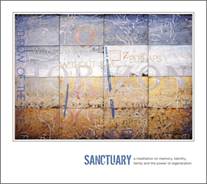 | Gary Daley - Sanctuary (Independent)
|
I wrestled with this one longer than I thought I would
I wrestle with them all, to a degree, but Sanctuary – the new one from Sydney composer/pianist/accordionist Gary Daley – took more time and listening and thinking and re-listening than any of the others
Much of it is that Sanctuary is big, very big in every way: the themes, the emotion, the ensemble writing, the very breadth of its conception… big and hard to wrestle to the page
Much of it also is that music such as this can knock the wind out of my diaphragm, by simply reminding me how far the word falls short of the music – it turns my tongue (and pen) into a wooden clapper. But we can only work with the tools we are given. So…
The core of the Sanctuary suite – and a suite of pieces it is – is Daley’s experience of caring for his mother who was slipping into Alzheimer’s. The ‘sanctuary’ of the title is the comforting world of memories Daley and his family worked to build for her during her suffering
And yet, in the midst of this dark time, Daley’s first grandchild was born. A little candle in the void. And a powerful reminder of life’s extremes – merciless ravage and sweet new bud
To express these big life ideas Daley has, across Sanctuary, gone for the primal and the spiritual – the earthy and the ephemeral – in almost equal balance. We have the astounding ‘Introduction,’ with James Daley’s rough hewn field holler shout-sung over a Ligeti-like pulsing chord; a howl in the hollow of the cold universe, but a strong, life-grabbing howl, nonetheless
We have the afro-groove of ‘Mandolin’ – with its opaque and bluesy Jess Green guitar solo – and the joyous hoe-down of ‘Kindred Chant’, led by the clearwater lap steel of Bruce Reid and Veronique Serret’s fiddle. The hoe-down opens out into the colour-field painting that ‘Interlude No 2’ is; Brett Hirst’s bass, bowed and pizzicato, singing a song of colours overlapping colours.” Green and James Daley sing the folk traditional song ‘The Wandering Boy’ like a Shaker hymn – hardwood pews, cold country chapel, bare to the bone melodically and emotionally. The song tells is of the unique connection between mother and son and needs no prettying up; in some way this makes ‘The Wandering Boy’, with simpatico accordion and National Steel, the heart of Sanctuary
So we are pulled back and forth across the themes and compositional/improvisational spaces of Sanctuary– floating dissonances here, a boinging jaw-harp there, slide steel melisma, Indian sliding melody, blues, 6/8 Cubano. The astonishing Paul Cutlan growls and yodels out of the middle of ‘Time and Place’. James Daley speaks the words of ‘The Wandering Boy’ over Bartokian blue-grey and smudged turquoise strings in ‘Interlude No 1’
And yet the suite holds sweet – Daley’s sense of balance and reticent drama puts each thing after each thing in an order that heightens and enriches the drama of this sad-happy journey through his themes of pain and regeneration
I knew when I found myself wrestling with Sanctuary that it was worth it. Like all works that earn the name Art, it takes some work, no mistake. If only all work could have such a rich result
|
James Hardaker
Previously published on Australianjazz.net |
| Back to Index |
|  | Aaron Diehl - Space Time Continuum (Mack Avenue/Planet)
|
Following his 2013 tribute to the Modern Jazz Quartet The Bespoke Man’s Narrative, New York pianist Aaron Diehl has released a jubilant new trio album featuring several guests including two octagenerians
Six of the eight tracks are Diehl’s refined and intricate originals and played with his exquisite touch and phrasing
Art Blakey’s 70’s piece Uranus is the opener by the trio with drummer Quincy Davis perfectly emphasizing and elaborating on the theme before Diehl’s richly woven solo introduces his long-term associate David Wong’s quick-moving bass sequence
One of Duke Ellington’s ex-personnel, Joe Temperley on baritone sax, now aged 85, appears to solo with rhapsodic intensity on The Steadfast Titan. A second saxophonist in his eighties, Benny Golson is an album high point with his upbeat, swinging solos on Organic Consequence, and paired with the young effervescent trumpeter Bruce Harris
Kat’s Dance, a kind of Bolero in 6/4 introduces a third saxophonist, Stephen Riley, on tenor, who plays in a pleasant, breathy style reminiscent of jazz in the sixties and Diehl’s piano plays a complicated and precise accompaniment
Broadway Boogie Woogie inspired by the Mondrian 1943 painting is not a boogie, more like a high speed Bud Powell piece
Diehl’s widespread activities have included backing major vocalists Cecile McLorin Salvant and Charenee Wade. Wade is included here on the title track singing blues-inflected verses straight out of the Betty Carter songbook with embroidering from Golson and Harris, transitioning into a faster beat for solos from everyone
Diehl has produced an album of high-level, detailed musicianship, a collection of style and substance
   
|
John McBeath
Previously published in The Australian Aug 2015 |
| Back to Index |
| 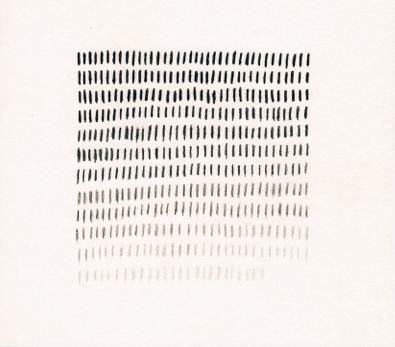 | Tim Willis and The End - Night and Day (Newmarket)
|
This third album in the recorded life of Melbourne guitarist Tim Willis’s The End expands the group from a quintet to an octet, retaining Willis and bassist Gareth Hill plus the instrumentation from the previous band and adding a second guitar, trumpet and piano
Six of the eight Willis originals were written for the PBS 106.7 Young Elder of Jazz Commission in 2012 carrying a $10,000 award, and premiered at the 2013 Melbourne International Jazz Festival
Liner notes describe the music as blending genres of jazz, post-rock and minimalism, drawing on influences from John Adams, Phillip Glass, Steve Reich, and The Necks. All of those wide-ranging influences are certainly present in varying degrees
A hastening jazz-rock rhythm driven by bass and Sam Young’s drums begins the opener Night, only to fall silent as trumpet, alto and tenor – from Brae Grimes, Jack Beeche, and Kieran Hensey respectively – reiterate an insistent four chord theme over the re-emergent rhythm. Two guitars join the mounting climactic as the rhythm section disappears again leaving the horns floating Reich-like to introduce a wild, heart-stopping alto solo with jabbing contributions from everyone
Throughout the album good use is made of diminutive scoring and interstitial silences to promote various moods: somber, murky, melancholy, or sometimes lightness and joyful expectation
These compositions and arrangements are of a high and unusual order, if occasionally verging on the repetitive. The overall atmosphere is one of building tension and portent, skillfully illustrated in an original style of music
   
|
John McBeath
Previously published in The Australian Aug 2015 |
| Back to Index |
| 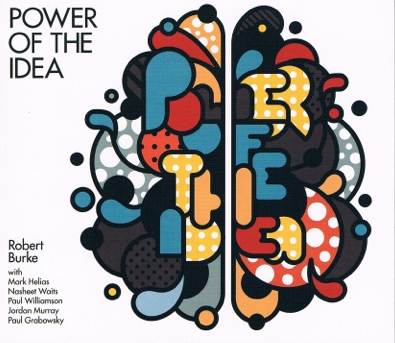 | Robert Burke - Power of the Idea (Jazzhead)
|
With performers from Monash’s Sir Zelman Cowen School of Music: Assoc. Professor Robert Burke on saxophone, pianist Professor Paul Grabowsky, plus two lecturers, and adding two of New York’s foremost players this recording can’t fail to exemplify its title to demonstrate all-powerful jazz ideas
The nine sextet originals – five by Burke – were recorded late in 2014 at Acoustic Recording, Brooklyn, New York, and Burke says he gave no instructions re artistic direction in improvisations; these were connected to the central ideas as a basis of the musical conversation
Burke’s Mercurochrome opener travels along its irregular theme impelled by Nasheet Waits’s underscoring drum beats before racing sax and Paul Williamson’s high-reaching trumpet begin to wander in free improvisation. They’re soon joined by Grabowsky’s chords, Mark Helias on bass and Jordan Murray’s trombone and then re-joined by Waits’s drums in a forceful solo
The sole Grabowsky piece, Abandon uses a short piano trio intro ahead of the horns’ theme statement leading into another high register trumpet solo as bass, drums, and the piano’s insistent chords push it along to launch a rough, talkative trombone, and a lengthy energetic drum sequence
Freebopcom by Murray investigates its title with a post-bop theme from the horns with piano ornamentation transiting into a robustly swinging bass interlude, Burke’s hoarsely investigative tenor, and the piano alternating between a riding flow and atonal chord hits
This is a ground-breaking collection – complex and adventurous – from four Australian and two US players where the compositions and performances create the illusion that they’ve all been playing together for years
    
|
John McBeath
Previously published in The Australian Aug 2015 |
| Back to Index |
| 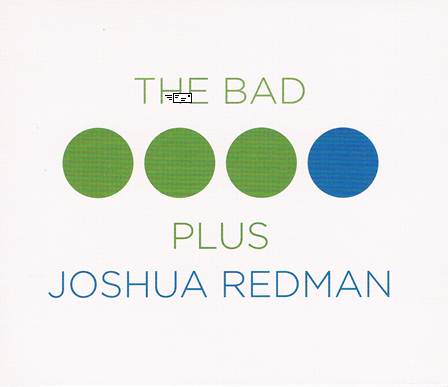 | Joshua Redman - The Bad Plus (Nonesuch Records)
|
Only one of US trio The Bad Plus’s previous 10 albums in their 20 year history has included a fourth player, and now saxophonist Joshua Redman fits genetically into their rule-breaking audacity
Australian audiences had an opportunity to hear the trio at this year’s Melbourne International Jazz festival where their new millennium rhythms, intelligently blending post sixties jazz and aspects of indie rock played to capacity houses
The new album has seven originals by trio members and two by Redman. Bassist Reid Anderson’s Dirty Blonde, something of a signature tune for the trio, opens with the ensemble’s theme statement over its darkly lurching harmonies and drummer David King’s rock rhythm. After pianist Ethan Iverson’s spaced chordings Redman’s tenor embarks on a jagged solo, followed by Iverson’s scampering piano
Iverson’s composition Country Seat begins with a fast tempo piano and sax unison theme, before breaking into a hurrying fly-over treble and thrusting chord pairs ahead of a blasting free-improv sequence from Redman
Redman’s piece The Mending, opening with the solo piano’s stately, chiming chords moves into a bluesy mode as bass and brushed drums arrive and eventually the tenor races all over the horn’s range to lapse finally into a relaxed melodic exposition of the tasteful theme
On stage the piano trio manage to project an entertaining rarity in jazz: a style of self-deprecating humour, as they play their esoteric originals with élan and great ability. The Bad Plus is a piano trio like no other and the addition of Joshua Redman makes this album attractive both to his fans and theirs
   
|
John McBeath
Previously published in The Australian July 2015 |
| Back to Index |
| 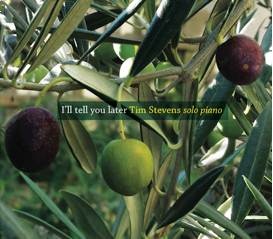 | Tim Stevens - I’ll Tell You Later (Rufus Records)
|
This is a studio recording of an earlier concert entitled Reimagining the Sacred from Melbourne pianist Tim Stevens, an esoteric collection of five pieces, titled ‘movements’, plus an encore.
Stevens is well known as a jazz pianist and expert improviser, playing with many notable jazz artists, winning numerous awards, and also studying to achieve academic music qualifications including a PhD
Each movement is an individualistic interpretation of ecclesiastical music, influenced by his days as a church choirboy
The first and second movements are themes and extensive classical extemporisations around firstly Ralph Vaughan Williams’s Kings Lynn, adapted from an English folk song, and then My God I love Thee by Charles Woods
In the third movement snappy jazz-style improvisations comprise most of John Ireland’s hymn Love Unknown where the original melody appears just for two final choruses
Stevens says his finale, Wandering The King’s Highway – an unexpected barroom ballad in a classical program – brings ‘a tennis racquet to the cricket match’ – and he plays a straight version of this rollicking tune
He explains that ‘the record is not particularly jazzy’, and that statement rings true. Apart from just a few sequences in this enigmatically entitled concert, the five movements are ruminations, and thoughtful contemplations such as the combination of two pieces: a lively, yet pastoral interpretation of William Mathias’s The Magnificat, seguing into a stately, meditative version of J S Bach’s St. Anne
These performances, boldly attributed to both Stevens and the original composer, constitute a highly personal, erudite collection that might appeal to fans of both classical and sacred music
   
|
John McBeath
Previously published in The Australian July 2015 |
| Back to Index |
| 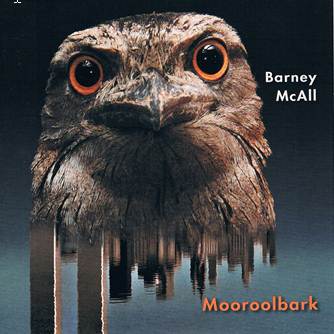 | Barney McAll - Mooroolbark (ABC/Universal)
|
After 17 productive years in New York, pianist/composer Barney McAll returned to Australia to take up the 2015 Sydney-based Peggy Glanville-Hicks composer residency
His prolific career includes performances on over 70 recordings, many of which he arranged, composed, and led, often featuring stellar international artists
Mooroolbark, a tribute to the Melbourne suburb where McAll grew up consists of nine originals, recorded at the ABC studios Sydney, and one track, Apple Tree recorded live at the 2013 Wangaratta Jazz Festival. McAll launched the album at this year’s Melbourne International Jazz Festival where his trio’s performance of Apple Tree reaching an apex of superbly timed, high level, knockout funk brought the house down
The other tracks feature McAll leading the full quintet ASIO – Australian Symbiotic Improvisers Orbit – a transcendent ensemble whose rhythm section of bassist Jonathan Zwartz and Simon Barker on drums substructurally reinforcing McAll’s piano is arguably the best in the country
Saxophonist Julian Wilson and Stephen Magnusson on guitar work together superbly interpreting these individualistic compositions which utilise dense and unpredictable harmonies, yet remain curiously melodic
A good example is Transformations, at first a moody piece deftly pairing unison piano and guitar – a guitar solo is a standout – and Wilson supplies altered tonality on alto clarinet as the piece evolves from its mysterioso piano and bass opening into staccato chords, flowing piano and a lively Latin beat
A jagged rhythm pervades February, well-stocked with pianistic ideas, as all these are, and provides a masterfully quick tenor solo from Wilson
This is an excellent collection of distinguished compositions, expertly arranged and played by some of Australia’s foremost jazz performers
    
|
John McBeath
Previously published in The Australian July 2015 |
| Back to Index |
| 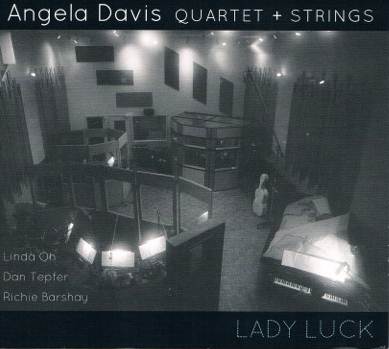 | Angela Davis Quartet and Strings - Lady Luck (Independent)
|
Following her 2013 debut album, The Art of the Melody, Australian saxophonist Angela Davis, recently returned to Australia from New York where this second album was recorded.
As with the earlier recording it features her quartet, but this time with an added string quartet, a mix that’s becoming the troupe du jour for many jazz groups. Nothing wrong with that, and this one is expertly arranged by Steve Newcombe
There are four originals and four standards including the title track, a Thad Jones composition with a smart piano solo from Dan Tepfer, as the alto floats away with the theme to introduce Linda Oh’s strong bass solo backed by the strings
Michel Le Grand’s beautiful melody You Must Believe in Spring is well-suited to the strings introduction and to Davis’s hyper-mellow tonality as she lusciously outlines the melody.
Davis’s Hymn For The Lonely, a slow and sad ballad, features an expressive beginning from piano, bass and Richie Barshay’s drums heralding the alto’s melancholy entry with the commiserating and supporting strings
Another original, Nola’s Waltz has an air of nostalgia given full reign by Davis’s honeyed tonality, and adds a faster-moving, inventive bass solo. A brighter, quicker, post-bop theme carries along A Thousand Feet from Bergen Street with Tepfer’s swinging piano solo leading into the leader’s melodic improvisation ahead of Oh’s galvanizing exchanges with the drummer
An unexpected inclusion, the Christian hymn Abide With Me, is the closer, and features the alto working through a contrapuntal passage with the piano
    |
John McBeath
Previously published in The Australian July 2015 |
| Back to Index |
| 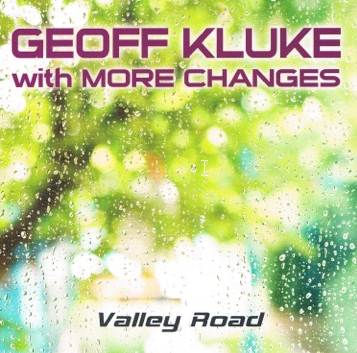 | Geoff Kluke - Valley Road (Independent)
|
This is a big production from Melbourne bassist Geoff Kluke, featuring fifteen of his compositions, and eight additional players. Broadly the style is mainstream swing with a sprinkling of noteworthy solos, including some from the leader, best heard in his two short acoustic bass pieces, Lowdown Showdown or Ziggy’s Home
The numbers are of a conventional format, often blues-influenced, and mainly serve as vehicles on which the soloists improvise. The groups vary in size from a trio of Peter Petrucci’s guitar, drummer Mike Jordan and Kluke’s bass in a guitar showcase track Song For Luke, up to an ensemble of all nine performers in one of the best arrangements, A Little Walk
The title track also features Petrucci’s guitar in a soothing, slow tempo performance as a duo with Kluke’s electric bass where both stringed instruments work particularly well together in sound and mood
Bob Sedergreen appears on about half the tracks supplying his well-known bluesy piano, particularly on Grahame’s Blues, after a rollicking tenor solo from Wilbur Wilde. Trumpeter Eamon McNellis takes the lead in another nine-piece arrangement, Correa, and contributes a capable solo ahead of Carlo Barbaro’s more introverted tenor sax
Kluke takes up an electric bass for another blues: Jaywalk with solos from David Rex’s alto, Sedergreen’s piano, and Wilbur Wilde’s funky tenor
Paul Williamson’s quick-moving baritone sax is foremost in Mr. Grunt and Kluke takes a solo on electric bass, followed by Sedergreen’s free-flowing piano. It’s another example of good ensemble arranging
This is an album of straight-ahead music that doesn’t set out to be groundbreaking, but has worthy features, and some satisfying solos from a group of professional jazz artists
    |
John McBeath
Previously published in The Australian July 2015 |
| Back to Index |
|  | John Raymond - Foreign Territory (Fresh Sound Records)
|
New York based trumpeter John Raymond released his debut album, Strength and Song in 2012, prompting the NY Times to name him as ‘a prepossessing young trumpet player’. This second album is less self-consciously ‘contemporary’ and draws more on the jazz tradition using Raymond’s compositions, some of which are based on chord progressions from standards
Fronting his quartet of piano, bass and drums the leader opens with the title track, which he says was the first song he ever composed entirely on trumpet, so in that sense the tune ‘was foreign territory to me.’ The piece begins with a short intro from Joe Martin’s bass and Billy Hart on drums ahead of the trumpet’s theme with Dan Tepfer’s supportive piano flowing easily into his solo exploring and extending the harmonic structure
A 24-bar blues New Blues, features a staccato trumpet opening interspersed with drum and then piano punctuation ahead of another inventive solo from Tepfer’s piano, an important supportive component throughout this album. The only non-original here is Mark Time, a composition by the late British trumpeter Kenny Wheeler; it’s a pretty ballad with a lilting theme, expressively interpreted by Raymond with his imaginative solo, eloquently climbing and descending through peaks and troughs
This is a pleasing collection from a cohesive group capable of artistic support and enhancement for the leader. The compositions are creative, well played and arranged, without trying to be world shattering, and Raymond’s playing provides interest and spontaneity
   
|
John McBeath
Previously published in The Australian June 2015 |
| Back to Index |
| 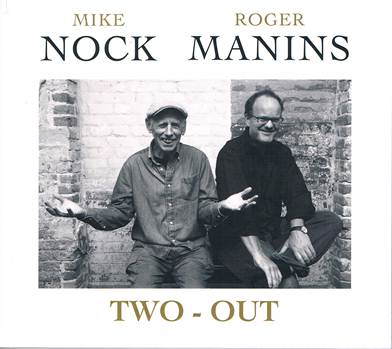 | Mike Nock and Roger Manins - Two-Out (FWM Records)
|
It’s no surprise that these two jazz titans, pianist Mike Nock and saxophonist Roger Manins, have recorded a duo album. They’re both New Zealand born – Manins lives in Auckland, Nock in Sydney – and are well-established musicians and teachers. They both have lived and played successfully internationally and worked together extensively
Each is known for their ground-breaking, cutting-edge work. What is surprising is this album’s content: eleven well-known standards delivered in ways that are accessibly melodic, yet interpretative, and at times intensely moving
The opener Falling In Love With Love sets the scene with a highly expressive rendition of the song before Manins’s solo works through the changes with a flow of eloquent ideas, underpinned by Nock’s substantial chords and ornamentation. The piano solo cleverly echoes Manin and then both embark on a contrapuntal chorus before the tuneful closer ending in Nock’s huge stabbing chord
A collection of unexpected numbers reaches an astonishing level with the Patsy Cline hit of the fifties Tennessee Waltz, where Manin’s interpretation moves into a blues-inflected waltz of soulful proportions and the piano’s supply of unpredictable chords evolves as a flowing solo dissertation of classic proportions. Never has such a trite country and western piece been given such a remarkable re-birth
The appeal of this album lies beyond just the nostalgia of these well-known songs, but in the original way they are played, preserving their original, often romantic, aspects in a style of superlative expression and sensitivity. Manin’s tenor evokes aspects of Lester Young and Joe Lovano, while Nock is reminiscent of Bill Evans
    
|
John McBeath
Previously published in The Australian June 2015 |
| Back to Index |
|  | Juliana Areias - Bossa Nova Baby (Independent)
|
Brazilian-born vocalist Juliana Areias, has been resident since 2009 in Perth, WA where this album was recorded. All twelve of these Bossa tracks were co-written by Areias and sung in Portuguese with lyrics translated into English in an accompanying booklet. The backing varies in size and instrumentation from the single, softly expressive solo guitar of Doug DeVries on Belas Artes (Fine Arts) up to seven musicians and a special guest choir of eleven voices on Meu Lugar (My Place) featuring a variety of Brazilian percussion instruments plus a surdo – an extra large bass drum – and two snare drums
The songs come in different Brazilian rhythms: bossa, samba, tango, and choro and Areias is more than capable in all of them. She has been compared to the iconic Bebel Gilberto, daughter of Joao Gilberto, in Brazil’s acclaimed EPOCA magazine
The mood is set in the opener Garoto de Copacabana (The Boy From Copacabana) with a Latin/bop sounding intro from a septet, as Areias slides into the lyrics in her rhythmically perfect and passionate vocal delivery. A piano solo from Graham Wood, followed by one on flugelhorn from Ricki Malet add contrast. Innocencia (Innocence) has solo piano behind quick vocal phrases inserted against an interesting, descendant harmonic structure, while Missao (Mission) moves into a quick samba rhythm with a bright voicing and vibrant backing
Here’s an agreeable vocal bossa album with enough variety and skilled musicianship to maintain interest, and the agile Portuguese lyrics sound exotic and romantic
   
|
John McBeath
Previously published in The Australian June 2015 |
| Back to Index |
| 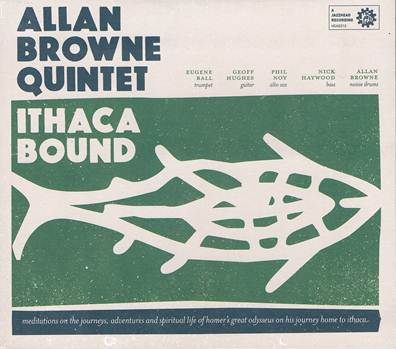 | Allan Browne Quintet - Ithaca Bound (Jazzhead)
|
This fifth CD from the Melbourne quintet led by drummer, composer, and poet Allan Browne sadly will be the last, since after launching the album at the Melbourne International Jazz Festival on June 1st, Browne died in hospital on June 13th aged seventy
He had undergone a lung transplant in 2002, subsequently releasing an album entitled Cyclosporin, the name of a drug which Browne claimed saved his life. Courageously he kept joyfully playing drums, often while connected to an oxygen cylinder. An irreplaceable stalwart of the Melbourne jazz scene, and a fascinating human being, Browne led a house band weekly at Bennetts Lane for fifteen years, and enjoyed a career in both traditional and contemporary music for fifty. His many fans will remember not only his marvellous drumming, but also his original poetry recitations.
It was his love of poetry that led to two previous original albums portraying poems by Arthur Rimbaud: A Season in Hell, and The Drunken Boat. The new album celebrates Browne’s favourite poem: Homer’s Odyssey featuring compositions from each band member in a vast and impassioned suite
On The Deck, the first of eight tracks, begins in an out-of-tempo leisurely mood with guitar, sax and trumpet notes as gradually drum rolls arrive and a rhythmic theme develops featuring Eugene Ball’s trumpet. Phil Noy’s alto sax and Geoff Hughes’s guitar join in as Nick Haywood’s bass emerges and Browne lays down a medium-slow tempo using multiple diverse effects. Noy’s masterful solo introduces another from Hughes’s hastening guitar as the whole ensemble then wanders freely to a conclusion
Noy’s composition Calypso features a post-bop theme over a subtle Caribbean rhythm and vivid solos from sax, trumpet and then guitar with ceaselessly inventive drums. Memory and Kharis begins briskly with the two horns underpinned by adroit guitar chords ahead of a lift-off trumpet solo interwoven with spectacularly effective drum stick-work.
The Lotus Eaters opens with mysterious trumpet and alto giving way to a guitar riff under some swift bass work from Nick Haywood. There are long-held cryptic harmonies from trumpet and sax while the guitar picks out a mystical motif. At the launch Browne announced that he thought this piece must have been written by Ball while ‘staring into a lava lamp.’
There is smart guitar and percussion duo work in The Suitors, as drums maintain imaginative mobility under high-register trumpet and continue during a bass solo’s added action
The finale, Peace at Last supplies a dramatic soundtrack of a steadily marching beat of bass and drums for Browne’s husky reading of the closing stanzas of Homer’s famous work from 800BC
It’s sad to realise that Allan Browne has unknowingly recorded his own epitaph, but this is a eulogy of which he would have heartily approved
    
|
John McBeath
Previously published in The Australian June 2015 |
| Back to Index |
|  | Francesca Prihasti - Night Trip (Independent)
|
The background to this debut album from pianist Francesca Prihasti involves three countries: Indonesian born, Prihasti studied at the Sydney Conservatorium, and recorded her album in New York
The five tracks of her originals feature US musicians drummer Ulysses Owens jnr. and Marco Panascia on double bass. Sydney guitarist Nick Vardanega makes up the quartet for this collection of mainstream music with hardbop elements. The opener Nockturne (a salute to pianist and tutor Mike Nock) establishes the style: slow to medium tempos, flowing piano trio work, with solos and guitar/piano unison passages. Prihasti’s playing swings melodically and Vardanega adds sympathetic ideas in his own solos
Starting with a bluesy theme from Prihasti on Fender Rhodes in unison with guitar, The Bridge is well supplied with a rhythmic drive from bass and smart drum diacritics. Panascia’s bass provides strong grounding throughout and delivers a skillfully inspired solo assisted greatly by Owens’s percussive action
The title track maintains the mode with Prihasti’s running piano, aided by soft guitar chords and hustling drums ahead of Vardanega’s quick travelling solo and a robust, multi-varied drum sequence. Here and Now begins with a bass ostinato on the piano introducing a rapidly moving solo on double bass, followed in turn by the extempore guitar, elegant high treble piano, and finally muscular drums
This is a pleasant debut album, accomplished and tuneful, performed by a close-knit, inventive group, without pushing boundaries or aspiring to anything experimental or revolutionary
   
|
John McBeath
Previously published in The Australian May 2015 |
Pianist Francesca Prihasti stamps her own identity on this Brooklyn recording via five original compositions written in a style emanating from the legacies of Red Garland, Bill Evans and Herbie Hancock. Francesca has a slight touch on the piano on these slow to medium tempo tunes, using her left hand sparingly and focussing the listener’s attention across the broader ensemble. Two of these are fine NYC drafts, in drummer Ulysses Owens JR and Marco Panascia on bass. Originally from Jakarta and having studied in Australia, Prihasti also uses the Fender Rhodes on ‘The Bridge’ which has a leisurely loping groove and backbeat underpinning the appealing harmony. Top line bassist Marco Panascia references both Adderley’s ‘Work Song’ and Hancock’s ‘Chameleon’ in what is the funkiest of bass solos. Sydney guitarist Nic Vardanega more than holds his own with some smart ensemble and solo work. A highly accessible and honest debut reflective of Prihasti’s abiding influences.
   
|
Peter Wockner
|
| Back to Index |
|  | Myra Melford - Snowy Egret (Enja Records)
|
US pianist Myra Melford in 2014 released an acclaimed duo piano recording, Everything Here is Possible, with Australian pianist Alister Spence, winning an Australian Art Award. Here she appears leading her quintet for this New York recording of ten of her originals
While Melford is recognised as a virtuosic player with a variety of global influences, often cutting edge avant garde, she is also a deeply soulful pianist with a passionate understanding of Carribean music and the blues. There’s a wonderfully bluesy opening to the final track, The Strawberry, which evolves into a thickly chorded post-bop theme for Ron Miles driving cornet solo, followed by Liberty Ellman’s sprightly guitar, all powered by Tyshawn Sorey’s hyper-active drum work
Appropriately the tempo is lowered for Night of Sorrow as the rippling piano meanders in melancholy, adding octave-spaced high tremolos as Sorey takes up soft brushes and Stomu Takeishi’s bass guitar supplies a haunting non-disruptive underpinning. The guitar provides a thoughtful sequence, continuing while Melford takes up the melodica for a chorus
First Protest opens with quick solo piano flashes as speeding drums arrive and the piano builds frantically before dropping into a jagged theme with the cornet. Ellman’s guitar alternates between running notes and stabbing chords as the piece intensifies in a stop/start way to an abrupt finale
A lyrically precise cornet solo begins The Virgin of Guadalupe to introduce canonical accompaniment from piano and guitar leading on to a bass guitar passage of flowing beauty
This is an outstanding album of varied compositions and superior performances in both ensemble and solos with exceptional piano contributions
   
|
John McBeath
Previously published in The Australian May 2015 |
| Back to Index |
| 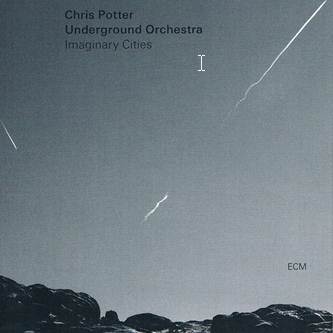 | Chris Potter Underground Orchestra - Imaginary Cities (ECM)
|
US saxophonist Chris Potter is firmly established as an internationally renowned player, voted second only to Sonny Rollins in a Downbeat poll. Potter has performed in Australia several times, most recently, and memorably, with Pat Metheney’s Unity Group in 2014. In this his eighteenth album as leader he has composed and arranged for an eleven-piece orchestra. Potter says he ‘fleshed out’ these eight compositions with a quartet and feels that playing them in a small group helped make a better orchestral result
The album opens quietly in Lament with a string quartet in chamber music mode for nearly two minutes before drums, bass, and piano arrive supplying rhythm while the tenor sax adds a melancholy theme of lyrical movement then provides thoughtful, ever-increasing intensity, in an evolving solo
The next four tracks are all entitled Imaginary Cities, each with a subtitle: Compassion; Dualities; Disintegration, and Rebuilding comprising a four part suite of an overall theme, and a vehicle for various impressive solos: guitar, vibraphone, marimba, bass guitar, piano, string quartet, acoustic bass, drums, and Potter’s tenor, soprano or bass clarinet
Three more numbers complete the album: a groovy Firefly; a jumpy eeriness in Shadow Self; and a vast cerebral excursion in Sky
Amongst many notable performers on this album full honours must go to Potter. His eloquent compositions, arrangements of superb mood and development, and his cliché-free playing with its daring and precision make this a contender for a jazz album of the year
    
|
John McBeath
Previously published in The Australian April 2015 |
| Back to Index |
| 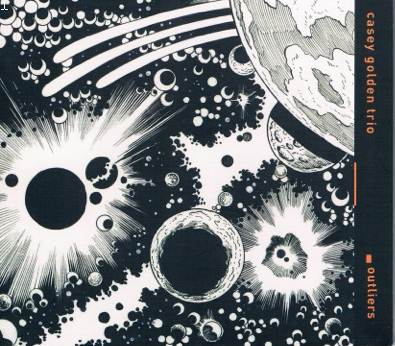 | Casey Golden Trio - Outliers (Scrampion Records)
|
The latest recording from Sydney pianist Casey Golden’s well-established trio continues to explore and expand their unique approach to jazz, infused with fugue-style classical ideas and melodic content. The collection’s title is appropriate: as defined by the OED outlier is ‘a person or thing situated away or detached from the main body or system.’ The title track is representative of the eight originals, opening with downward cascading arpeggios – highly reminiscent of a classical fugue but with added rhythm – slowing to a bridge before the theme returns for development, interspersed by Ed Rodrigues’s drums and cymbals and then a bass solo from Bill Williams
There is more interplay between drums and piano on Flatpack Empire with tempo changes, and expressive pauses. The bass has a more supportive role in Paralysed supplying a quick staccato underpinning of treble chords, before a thoughtful passage of piano improvisation and a jaunty, bouncing conclusion
Recluse continues the genre with a flowing melody against downward stepping harmonies and impetus supplied by Rodrigues’s snare drum and a stately bass line moving into a scholastic improvisation, what classicists would term ‘extemporisation.’ One short piece, Uncovered runs for just under a minute
These are highly original and commendable works, well played, but after several tracks they begin to exhibit a certain, not unpleasant, similarity of form and style. Think various Bach fugues cleverly and modernly arranged for a piano trio and set to rhythm
   
|
John McBeath
Previously published in The Australian April 2015 |
| Back to Index |
|  | Jack DeJohnette - Made in Chicago (ECM)
|
Is there a more gifted, all round musician, composer and long-established player with such a comprehensive list of jazz greats than drummer, pianist and composer Jack DeJohnette? He’s played everything from R&B to free jazz with many great names, notably Charles Lloyd and Keith Jarrett. Moving from Chicago to New York in 1964 he gigged with Coltrane, Monk, Bill Evans and many others. He played drums on Miles Davis’s seminal album Bitches Brew
This new release was recorded in August 2013 at the Chicago Jazz Festival, as DeJohnette turned 71. He’s used Chicagoans he has known for long periods: the two reeds players Henry Threadgill, and Roscoe Mitchell were his college classmates. Pianist Muhal Richard Abrams, aged 82 was the senior of the Chicago quintet, and bassist Larry Gray in his late fifties, the youngest
The concert of six lengthy, experimental compositions opens with Mitchell’s 17 minute piece Chant, a wildly improvised work growing out of a reiterative four note theme of increasing dissonance. It builds into free jazz ensemble and solos – notably Threadgill’s raw-toned alto, Abrams wide-ranging abstract piano, and DeJohnette’s powerhouse drum work accompanied by fast, raw excursions from Mitchell’s soprano sax
DeJohnette’s drumming is extraordinary throughout with his explosive solo of varied tonalities on Jack 5 especially impressive. Museum of Time is the most lyrical number where Abrams’s piano initially leads before the two horns work towards abstraction. Threadgill plays bass flute paired with Mitchell’s wooden bass recorder on This as Gray’s cello introduces a mystical atmosphere
This is complex, often abstract music, played by accomplished pioneers of the genre
    
|
John McBeath
Previously published in The Australian April 2015 |
| Back to Index |
East Coast Blues & Roots Music Festival (BluesFest) 2015
Last year marked the festival's anniversary – the 25th festival was the biggest and the loudest so far. Now you can't have two 25th festivals in a row, so many expected that the 26th festival would be a bit of a slower-paced one. But that didn't turn out to be the case. Despite the 11th-hour reshuffle in the line-up (some big international names decided not to front at the very last moment) and the sketchy weather, I reckon, the organising team did a great job preparing this year's event, which attracted more than 100K enthusiastic fans.
Friday 3/4/2015
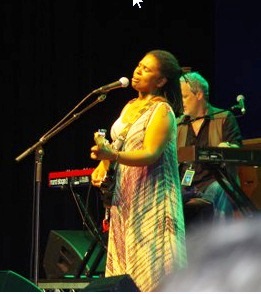 |
19:20 JAMBALAYA Ruthie Foster
Ruthie Foster – BluesFest 2011's feature artist, she was very warmly welcomed again by her very enthusiastic supporters. Grown up in gospel singer's family, trained pianist, self-taught guitar and banjo player (add to the mix farm girl, US Navy service woman, mum), she blends together several styles – gospel, blues and folk.
Her extraordinary voice, good lyrics and her captivating stage-image (simple and warm-hearted) make for a welcoming, enjoyable show. |
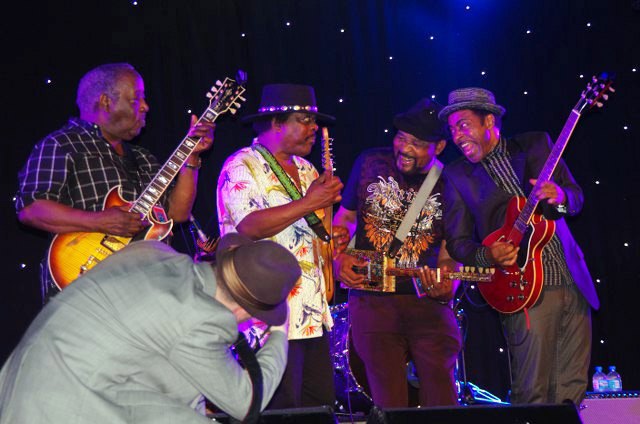 |
22:30 JUKE JOINT. Music Makers Relief Foundation
Music Makers Relief Foundation – if the MMRF is new to you, you've got to read the inspiring interview with its founders, Tim and Denise Duffy, in the April issue of Rhythms magazine. This year's performance was opened by Cool John Ferguson and Vasti Jackson. Left handed Cool John delivered guitar wizardry of a kind that I have not seen for years (if at all)! Cool John, in addition to performing own very interesting compositions, did not shy away from playing SRV's “Pride and Joy” and Hendrix's |
"Hey Joe".
A very strong tough voice coupled with off-the-chart strings – what more could you want?!
As to Vasti Jackson, there's no need for me to say anything; get online and enjoy one of his old numbers (thanks to youtube).
Saturday 4/4/2015
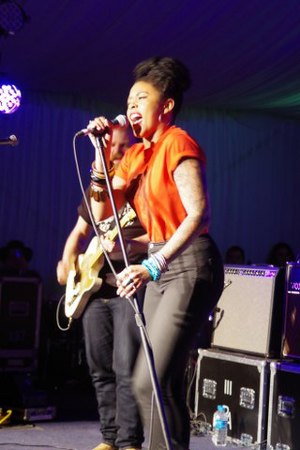 |  |
15:30 CROSSROADS Nikki Hill
Nikki Hill – my last year review of Nikki's BluesFest gigs finished with words 'this is the beginning of a new star. Watch her rising.' And she is rising indeed. This year, she had gigs on all three major stages, with heaps of professional photos taken, and multi-camera TV crews recording all her concerts…and her music keeps getting even better! While every saxophonist will tell you how hard it is to produce a proper growling sound, Nikki's voice does it with ease – lots of energy and dynamics.
|
And, not to miss, her very powerful, no-frills, straight to the point band.
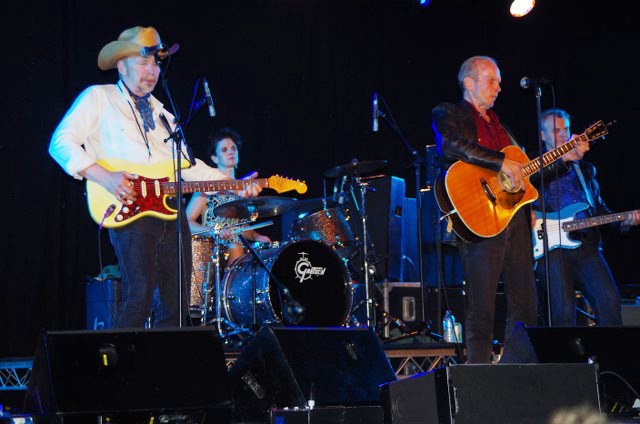 |
19:10 DELTA Dave Alvin and Phil Alvin and The Guilty Ones
Phil and Dave Alvin – two brothers who formed their first band, The Blasters, back in 1979. In 1986 David left the band and started a very successful solo career as a musician, poet, producer and movie actor. In 2000 his CD “Public Domain - Songs Form The Wild Land” won a Grammy award. Phil continued to be a front-man for The Blasters and released several solo albums as a singer and guitar and harmonica player (he also managed to get a Masters degree |
in Mathematics on the side). Since deciding to reunite in 2012 (after Phil's near death medical accident in Italy), they recorded the CD 'Common Ground' (Grammy nomination) – a selection of Big Bill Broonzy covers.
The BluesFest crowd really got it, especially the old ballad 'Key to the Highway'.
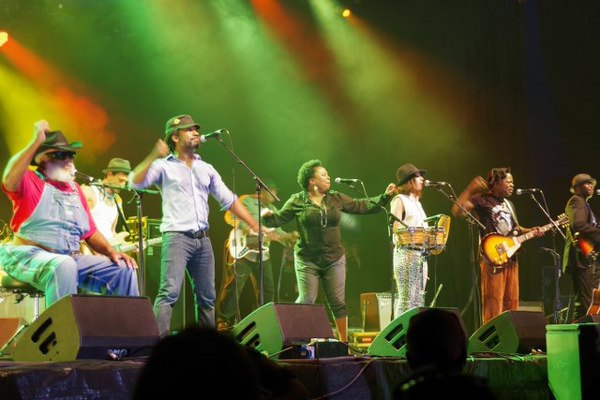 |
22:30 JAMBALAYA “Playing For Change”
Playing For Change – this gig was, as usual for PFC, very colourful both visually and musically. Nice to see Grand Pa Elliot again still shaking the tent's pillars with his low voice. PFC brings together music and musicians from different continents playing together for the great cause of changing world to the better. For me, the best part was the impromptu rendition of Honky-Tonk Blues played with only one acoustic guitar, two harps, two PFC singers and the great Keb' Mo'. |
No preparation, no music scores, just a raw blues created on the spot by great masters. Beautiful!
Sunday 5/4/2015
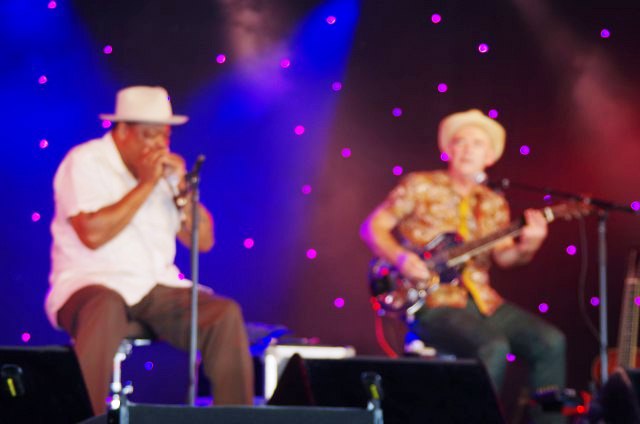 |
14:30 DELTA Phil Wiggings and Don Turner
Phil Wiggings and Don Turner – definitely the best gig. A “must see” of this year's BluesFest (forget all the megastars and TripleJ favourites). Real roots. A purely acoustic act with Australian Don Turner on resonator guitar and Washingtonian Phil Wiggings on Piedmont harmonica. They beautifully wove a deep, ethnographic and historical expedition into a colourful, virtuoso musical tapestry. Phil went about telling the long story of how, over the years, his African American family moved up from Alabama to Washington, |
singing and playing the songs of the times and the places they moved through. Very kind-hearted and charismatic, lots of jokes and amazing musical mastery. They started the gig with less than a hundred viewers (what would expect at 14:30?), but magnetically attracted a huge crowd after their first few songs!
 |
16:00 MOJO Beth Hart
Beth Hart – much rocky than bluesy this year. Included a very noticeable new ballad called “Tell her you belong to me” (here - make it loud!) from her last album “Better Than Home”. During the gig's closing song, Zeppelin's cult hit “Whole lotta love”, something very strange happened: all the baby-boomers in the crowd (including myself) seemed to get a bit teary. Maybe we'd just gotten something in our eye.
Or maybe it had something to do with Beth's "Lo-oo-o-ove" scream and the echoing, note-for-note, Page's explosive, |
generation-defining, guitar solo!
 |
18:30 CROSSROADS Angelique Kidjo
Angélique Kidjo – if the number of people recording performance on their mobiles is a measure of an artist's success and popularity, then this gig was the most popular one at this year's BluesFest. Very colourful outfits, lighting, African traditional movements, songs in different languages, beats – you felt as if you were at a festival somewhere in the middle of Africa, at a place where everyone knows each other and is glad to be sharing their good mood and vibes.
The majority of the songs presented this time were from the latest album, Eve, named after Angelique's mother as well as after the mythical “mother of all living”. |
 |
19:45 CROSSROADS Melbourne SKA Orchestra
Melbourne SKA orchestra – very-very entertaining, highest quality orchestral music and, again, total mayhem on the stage (at some point musicians where playing laying on the floor or jumping between the rows of chairs). The crowd was in a state of complete ecstasy. Euphoria! In one gig, band leader Nicki Bomba sent plastic collection containers out through the crowd to collect small change donations towards anti-malaria mosquito nets in Africa. It took just a few minutes for the crowd to return these containers, |
filled with several thousand dollars, back to the stage.
For Sydney-siders, visit here. I can't imagine how on earth it will be possible for them play in Opera House (the Opera House might well decide to go for a dip in the harbour during the gig). I'm definitely gonna go.
Monday 6/4/2015
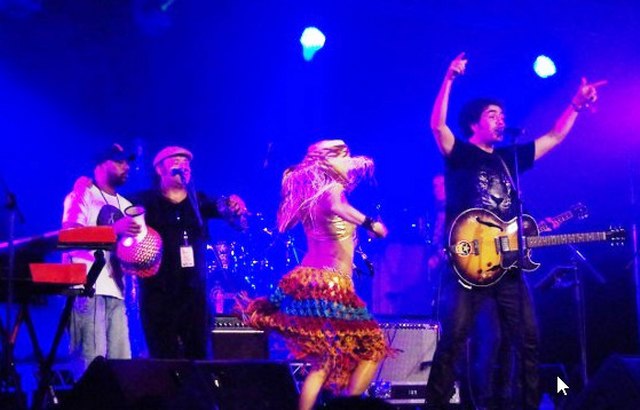 |
14:40 MOJO Watussi
Watussi – here is how the group describes itself: “lead by charismatic Columbian ex-pat, Oscar Jimenez, Watussi are a well-traveled troupe of Latino-tinged roots rockers”. A Sydney band, this year they added two amazing dancers: Sandra Lucas and Claudia Vidal. Hard to describe their style, movements and costumes. The Ancient American Indian (Peruvian?) mythology probably
comes to mind….It was a real treat for all senses – very fluid, original |
twists and turns of the human body against a backdrop of pulsing Latino music.
BUSKING STAGE
I cannot say much about the Busking Competition this year. For some reason, the Busking Stage was shut on Thursday and Friday. Unfortunately, the weather did not help either as the busking tent did not have cover for its listening crowd (this is definitely something that the organisers should look into).
And another thing – it would be nice to have a list of competitors and a schedule published, both, on the BluesFest website and on little leaflets.
Otherwise it is hard to know who’s performing at any given time and to plan how to spend your precious listening minutes. I didn’t have a chance to see all the buskers, but the most noticeable for me were:
A few other general observations:
- I'll repeat what I said in my last year report: “On the negative side, it looks like BluesFest has outgrown itself. It has become too big (area and crowd-wise)….” This year was not better. The enlargement of the JukeJoint stage didn't help.
- One more negative thing – the absence of BluesFest's Rhythm magazine this year (I think this was the first time this happened).
- Every year BluesFest widens its stylistic boundaries and, as usual, this has a positive and negative effects. On the positive side, it attracts a more diverse audience, more young people. But on the negative side it deviates more from Blues and Roots. I’m not suggesting that this is the wrong way to go, but still…
- Continuing my deep sociological observations about each year's favourite food stalls: the coffee shop (last year's champion) and the vegan food shop (champ from the year before that) both lost their appeal. This year, the Organic Donuts joint made a killing – they seemed to have 50 meter long queue there all the time (3-4 people in one row)…:-)
Some more names and photos – these artist definitely deserve your attention:
Marlon Williams and The Yarra Benders - "the impossible love child of Elvis, Roy Orbison and Townes Van Zandt".
Pokey LaFarge Band - "artfully dodgy ambassadors for old-time music, presenting and representing the glories of hot swing, early jazz and ragtime blues".
Keziah Jones – very(!) funky BluFunk (blues + Funk) from Lagos Nigeria.
The Rumjacks - Sydneysiders - "the five who have nothing to hide, who have no limit and there’s nothing to it but to make this music and make it loud, make it proud, add the extra energy and to hell with the consequences"
The Beautiful Girls - boys only band from Sydney.
|
by Vlad Gilbourd, April 2015
|
| Back to Index |
| 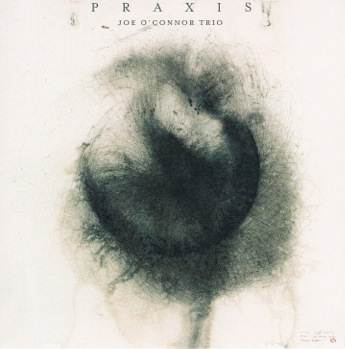 | Joe O’Connor Trio - Praxis (Independent)
|
This new piano trio debut album signals the arrival of a major new Australian talent. Melbourne pianist Joe O’Connor won the National Jazz Award at Wangaratta in 2013 and part of the prize was the offer of a recording deal with ABC Jazz and the resulting collection has now been released
His six originals here move through varying moods and styles, one moment flowing with evocative passages of lyricism, and then breaking into hyper-fast runs with James McLean’s drums occasionally extending, accentuating and punctuating. All of that happens in Chargrinning after an engaging theme of treble notes interspersed with short rests opens the piece and Marty Holoubek’s bass wanders into view
Maggot?begins with fast-moving bass and drums before the piano breaks in with a running theme that sounds cross-rhythmic, but then settles into speeding flights built on a series of descending chords; these passages could almost be a 21st century version of Art Tatum. An ethereal opening to Duane features sparse treble chords with bass notes from piano and acoustic bass, adding soft out of tempo brushes as the piece gradually gains momentum, and McLean switches to sticks as the piano work swells, pulses and ultimately fades to a conclusion
Piano, bass and drums all interweave skillfully and esoterically for the opening of Fractured Symmetry, with important spaces and staccato jabs and phrases
The question that arises from this most impressive debut album is whether or not O’Connor remains in Australia, or will he follow so many others to the US?
    
|
John McBeath
Previously published in The Australian March 2015 |
| Back to Index |
| 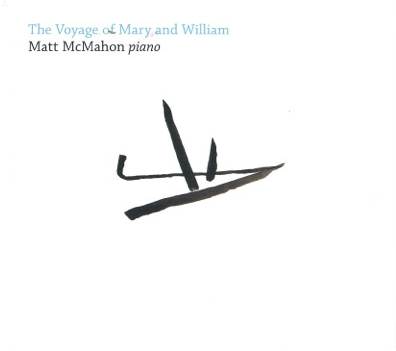 | Matt McMahon - The Voyage of Mary and William (PathsAndStreams Records)
|
Multi-award winning Sydney pianist Matt McMahon, although widely known as one of Australia’s foremost jazz pianists, has played in a bewildering variety of other genres over the years. He’s backed different vocalists from ballads to pop, explored Korean music and indigenous Australian pieces, recorded Arabic-style works with Joseph Tawadros, played flamenco with Bandaluzia, interpreted Peter Sculthorpe’s music with Phil Slater, composed and performed with electric viola da gamba in the Marais Project, featured Irish folk songs with his late brother Michael, participated in funk and soul bands, and much more
Sweeping aside questions about genre, in this, his first solo album McMahon observes that his wide-ranging musical experiences have left their mark on his conceptions in music dedicated to his Irish forebears, Mary and William, who came to Australia in 1847. Not that this music is about his ancestors’ experiences, but McMahon grew up surrounded by Irish music and notes those influence here, ‘underneath or behind the sounds.’
There is no theme or preordained idea in these twelve tracks, McMahon improvises various ideas, letting each sound follow the previous one in pieces that are movingly introspective, flowing easily from each section on to the next. Dense, yet pleasant harmonies are sometimes used in relaxed, descriptive sequences. The only fast-moving track Tempest Within, starts with rapid bass-end figures, increasing to quick treble roulades underpinned by staccato bass notes to end abruptly. The rest of the album is peaceful, relaxing, and at times sounding semi-classical, particularly in one dreamy example: Around the Cape
   
|
John McBeath
Previously published in The Australian March 2015 |
| Back to Index |
| 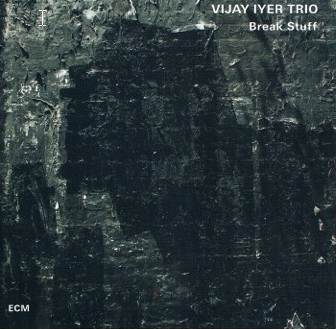 | Vijay Iyer Trio - Break Stuff (ECM/Fuse)
|
US pianist Vijay Iyer’s trio with bassist Stephan Crump and drummer Marcus Gilmore has been working together for eleven years and their musical symbiosis shows in this twelve track album featuring eight of Iyer’s originals. It’s the third release with various groups in just 11 months by the multi-award winning Iyer since moving to the ECM label. Explaining the title he says, ‘A break in music is still music: a span of time in which to act.’ And there’s plenty of action in the title track, from the piano’s quick rippling beginning pushed by Gilmore’s first beat of four emphasis to amplify Iyer’s chord jabs. After this hectic passage the tempo slows for Crump’s lyrical bass solo and the piano rolls serenely forward to then gather pace and return to the original fast thematic style – a break back
One of four non-originals is Work by Thelonius Monk, one of Iyer’s all-time heroes, and without a hint of emulation he achieves both a saluting recognition and a swinging trio interpretation. Billy Strayhorn’s final composition Blood Count, a deeply moving ballad, is beautifully interpreted by Iyer enlarging the minor harmonies and drifting expressively through its melancholy mood. Gilmore’s inspired drum solo, and his work throughout Coltrane’s Countdownare essential contributions to the piano’s speeding rendition and blast-off solo
This collection is a galvanizing illustration of contemporary jazz ideas by a piano trio of virtuosic ability and an almost telekinetic integration of each other’s performance and direction.
    
|
John McBeath
Previously published in The Australian March 2015 |
| Back to Index |
| 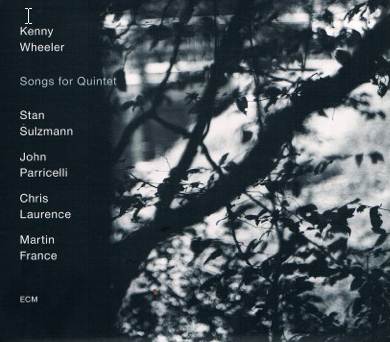 | Kenny Wheeler - Songs for Quintet (ECM/Fuse)
|
Trumpeter and flugelhornist Kenneth Vincent John Wheeler, better known as Kenny, was born in Toronto, Canada but moved to London in 1952, where he pursued a highly influential career until his death there in September 2014, aged 84. He was famously shy and often dismissive of his own work, referring to his compositions as ‘soppy romantic melodies with a bit of chaos.’ However many famous jazz greats played Wheeler’s compositions, including Johnny Dankworth’s all-star orchestra recording in 1968 of Wheeler’s suite Windmill Tilter, inspired by Don Quixote who appealed to the composer because ‘he seemed to be one of the great losers.’
Wheeler did not reach wide international recognition until the 1970s assisted greatly by his landmark 1975 ECM album with Keith Jarrett Gnu High. It was the first of 26 recordings he made for ECM, and overall Wheeler appeared on close to one hundred albums, appearing with such luminaries as Lee Konitz, Anthony Braxton, Dave Holland, Bill Frisell, Jan Garbarek, and Michael Brecker. During the seventies Wheeler also became involved with free improvisation playing with the Spontaneous Music Ensemble and Globe Unity Orchestra, and in 1977 formed the chamber jazz trio Azimuthwith pianist John Taylor and vocalist Norma Winstone
Sadly, Songs for Quintet recorded in December 2013 and released February 2015, is Wheeler’s last and he plays flugelhorn throughout with this group of long term recording associates: saxophonist Stan Sulzman first appeared with Wheeler on his 19-piece 1990 album Music for Large and Small Ensemble
Wheeler may no longer have been capable of his characteristic ultra-high register leaps but his pure tone of romantic melancholy remains, especially noticeable on the opener Seventy Six after guitarist John Paracelli’s quietly effective intro with Martin France’s delicate drumming. The tempo goes up for Jigsaw allowing ample solo space for flugelhorn and tenor sax as well as guitar and Chris Laurence’s double bass, all driven by France’s percussive punctuations
Sly Eyes opens with a marching-style drum before moving into a tango rhythm for Wheeler’s precise theme statement and Sulzman’s solo as horn and sax continue interchanging choruses. An all too brief 1076, at 2.40mins the shortest track, is an out of tempo, free-sounding piece well held together by France’s drumming continuum. There’s a bluesy origin underneath Old Time with a quiet sax and guitar chords opening gradually cranking up into a more energetic pulse, as Sulzman powers into a spirited solo and Wheeler arrives for a concluding duet and his own slowly quietening solo.
There was a lot more to Kenny Wheeler than his own self-effacing assessment as ‘someone who just takes pretty songs and joins them up’. We’re fortunate to have this final recording legacy showcasing his clear, relaxed and lyrical playing of understated grace that can stand as amongst his finest performances
   
|
John McBeath
Previously published in The Australian March 2015 |
| Back to Index |
|  | Tate Sheridan - Tate Sheridan (Independent)
|
Here’s the evidence that something other than politics can come out of Canberra and furthermore something of original high musical quality. Pianist Tate Sheridan has followed his 2014 debut album In Hiding, with saxophonist Calum Builder to introduce this newest release of his piano trio. Sheridan is a graduate of the ANU and as with the previous collection the self-titled album is funded by the Friends of the ANU School of Music. All eight tracks here are Sheridan originals and stylistically they vary from the fast-running opener, Please No Questions featuring a quick piano flow of changing ideas and a smart bass solo from James Luke, to the fragmented theme of Run Don’t Walk, and an ultra-slow, seriously profound piece, Onward Outward
There are occasional vague echoes of Oscar Peterson in Sheridan’s swinging solo on House Arrest but with the Canberran’s characteristic addition of unpredictable, yet interesting variations in direction. Lone Gunman is a seriously slow ballad with weighty passages of bowed bass, staccato chordal piano and a pounding beat. Another slower composition, Grace is a relaxed exploration of a pastoral theme with drummer Aidan Lowe using brushes to good effect and when the piano branches out there is a slightly soulful undercurrent, neatly investigated in the bass solo, followed by the piano building to a stately finale
Sheridan is a talented young composer and pianist destined for a role of national importance on the Australian jazz scene
   
|
John McBeath
Previously published in The Australian February 2015 |
| Back to Index |
| 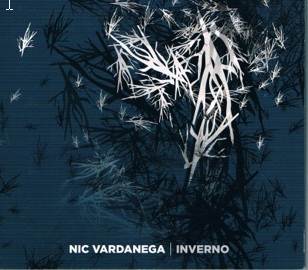 | Nic Vardanega Quartet - Inverno (Independent)
|
Sydney guitarist Nic Vardanega’s debut album has the right mood to portray its title, Inverno (winter). Vardanega’s eight originals are redolent of wintry vistas viewed from a warm room: the music well conveys the austerity of a winter landscape observed from a comfortable location. The opener Revelation is a good introduction as Vardanega’s guitar outlines a theme which manages to be somber but not despondent. The atmosphere is assisted greatly by Steve Barry’s piano supplying attractive chords to the guitar’s melody line and a descriptive, running solo as James Waples provides thoughtful drum work with David Groves’s underpinning on acoustic bass
Vardanega’s solos are inventive and they maintain a consistent narrative that preserves the motif in a quietly eloquent way. In fact quietness and restraint are often keynotes in these eight numbers. Asolo, – named after a small North Italian town – is played in a bossa rhythm, and after tasteful solos from guitar and piano, features a mobile bass solo re-introducing the theme to conclude. The aptly titled final track, Closure has passages of pleasing exchanges be-tween piano and guitar, while December evokes a European winter; coldness depicted without being cold-blooded, and it swings in a subdued manner. Fittingly five of these songs, including Asolo and December are in minor keys, as is Standstill an ultra-slow tempo piece, which uses small amounts of guitar reverb to good effect
This album launches Vardanega as an accomplished leader, guitarist and composer capable of taking a subject and illustrating it musically with skill and originality
   
|
John McBeath
Previously published in The Australian February 2015 |
| Back to Index |
| 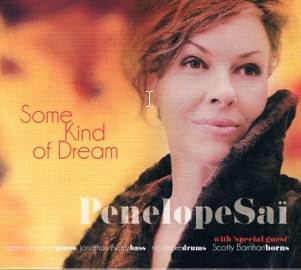 | Penelope Sai - Some Kind of Dream (Independent/Planet)
|
Vocalist Penelope Sai’s third album, following Evening Falls in 2010, and Siana in 2012, utilises the same trio from the latter, adding Scotty Barnham guesting on trumpet. Another similarity is Sai’s compositional contribution to the six originals of its twelve tracks. Now based in the Blue Mountains outside Sydney, Sai spent many years performing in Paris and sings with a very attractive voice in a Parisian/jazz vocal style: an after midnight, soft intimacy with a sometimes slightly over-emphasised theatricality
The opener is the song Chet Baker made his own, Let’s Get Lost taken at a slightly slower tempo than the original, and none the worse for that, with suitable solos from both trumpet and pianist Sean MacKenzie, who arranged the album. Of the originals, the title track works well, capturing a midnight reverie feeling in a sophisticated musical frame, while Neon Nights, slightly quicker, uses fast word groupings effectively, and Ave Guynemer swings delicately thanks in part to drummer Nic Cecire
Swing era standard Blue Champagne is given a suitably bluesy treatment, and I Guess I’ll Have to Change My Plans is interpreted with originality and features a sympathetic bass solo from Jonathan Zwartz, who provides faultless foundations on every song. There’s another of Zwartz’s solos on Spring Will Be a Little Late This Year, which displays Sai’s expressive ability in a song typical of the album’s mood of romantic and nostalgic ballads
This album doesn’t set out to be a groundbreaking vocal collection, but achieves an engagingly warm atmosphere with Sai’s original vocal stylings and some fine arrangements
   
|
John McBeath
Previously published in The Australian February 2015 |
| Back to Index |
| 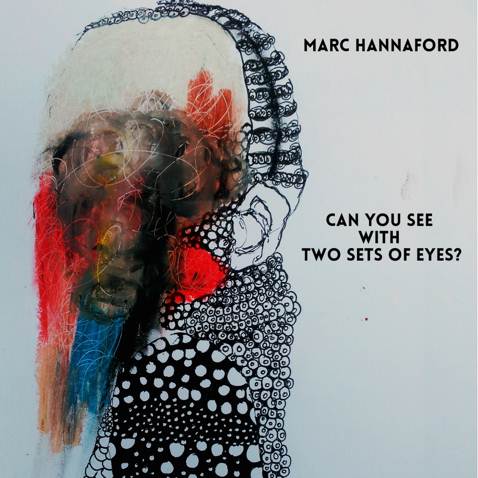 | Marc Hannaford - Can You See With Two Sets of Eyes (Independent. Digital only)
|
If by chance you were wondering what an advanced, contemporary, improvised, virtuosic music performance might sound like, a decade or more into the future, this album provides a definite possibility. Multi-award winning ex-Melbourne pianist Marc Hannaford, currently studying for a PhD at Columbia University New York, has assembled two US musicians – tenor saxophonist Ellery Eskelin, and drummer Tom Rainey – with his long-term Australian associate, trumpeter Scott Tinkler, to record six extended improvised exchanges
Anything that might be said about a particular track to illustrate the overall approach on this album – funded by the Freedman Fellowship and The Music Council of Australia – is likely to be contradicted on another track. For example the sixteen minute opener Murmur uses Rainey’s drum kit throughout but not in the usual rhythmic style; a slow tempo is inferred, not stated, in a completely unfettered way, whereas Spechsinder begins with elements of rhythmic post-bop and features a lift-off trumpet and drums passage that pulses quickly, swinging madly before piano and tenor arrive with their own spacey contributions as tempo becomes irrelevant and piano and drums swerve and speed, then slow and speed again to an abrupt conclusion
Framed starts with a comprehensive tenor cadenza and added percussion punctuation leading into a fast running, piano sequence with big, stabbing atonal chords
This is a collection of powerful and exploratory playing, highly original and improvised freely and energetically. It’s music that could perhaps be imagined if Albert Ayler sat in on a session of free expression with John Cage and Cecil Taylor
    
|
John McBeath
Previously published in The Australian February 2015 |
| Back to Index |
|
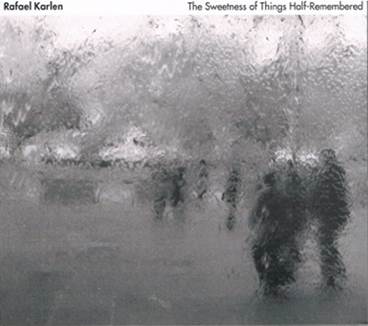 |
Rafael Karlen - The Sweetness of Things Half Remembered (Pinnacles Music)
|
This unusual album is a Brisbane production, recorded at the University of Queensland, featuring the music of saxophonist Rafael Karlen. It’s a blend of elements of jazz and contemporary classical music: what used to be called ‘crossover’. In addition to Karlen’s tenor sax the group includes his long-term pianist Steve Newcomb plus the Rosenberg String Quartet. Much of the material here was composed as part of Karlen’s Masters Degree at the University of York, England. The mood throughout is languid and contemplative with the classical aspects dominant. Strictly it’s not a ‘jazz’ album, more a Western art music collection
The opener If Not Now, When? begins with a delicate cello ostinato, soon joined by the other strings in a gentle, rolling theme, smoothing an entrance for Karlen’s tenor sax as the piano adds embellishments. It’s difficult to ascertain how much of these pieces is composed and which passages are improvised, but a good deal of the tenor sax solo in the opener could well be improvised, albeit along classical rather than jazz lines
Bounces Nicely certainly does that: after a pizzicato intro the tenor springs in with a solo that’s an impressive mix of classical phrases with muted jazz references. The title track portrays its theme very sensitively with the tenor floating over piano and strings in a nostalgic mix of romance and memory
The playing in this collection is of a very high standard and the arrangements achieve Karlen’s stated aims of contrast, coherence and interest. This is perfect music for a quietly lethargic and introspective Sunday afternoon
   
|
John McBeath
Previously published in The Australian January 2015 |
| Back to Index |
| 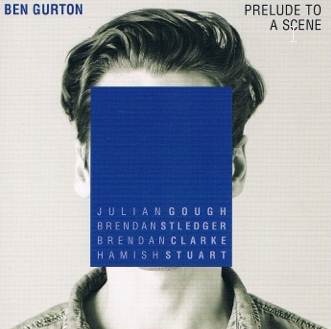 | Ben Gurton Quintet - Prelude to a Scene (MIR Creation)
|
Featuring some of Sydney’s foremost jazz players, this debut release for a new label, is the first Australian production in high resolution DXD format. The technique used minimal amounts of compression or equalizing, and reverb at 352kz sampling rate and 24-bit word size. The recording quality obtained by renowned engineer Ross A’Hern is certainly outstanding, and puts the listener at the centre of the ensemble by having all the musicians performing together around a main stereo pair of microphones
Leader Ben Gurton, composer and trombonist, has worked behind the scenes with such artists as The Cinematic Orchestra and Maria Schneider, but this is his first jazz release. The notes say the music is inspired by cool jazz, film music, and European instrumentals, but the emphasis – as the title implies ¬– tends towards a film soundtrack style of evocative narrative. This is particularly evident in A Journeywith Gurton’s trombone sounding relaxed and pastoral over Brendan St Leger’s piano chords and ripples
Languidly smart interplay between piano and Brendan Clarke’s bass is a feature of Forwards if Not Backwards, and the leader contributes a wake-up trombone solo in an otherwise doleful Note to Self. There is more of a jump feel to The Good Grind pushed along by Hamish Stuart’s deep-end drums and a tenor solo by Julian Gough who delivers a satisfying and thoughtful passage in Seeing More
Overall this high quality recording’s mood is dreamy, quiet and pensive in an undemanding cinematic way with most of the lead work carried by Gurton’s trombone
   
|
John McBeath
Previously published in The Australian January 2015 |
| Back to Index |
| 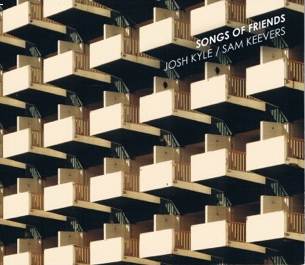
| Josh Kyle and Sam Keevers - Songs of Friends (Independent)
|
Now that nearly all of the standards have been recorded by just about everybody, finding new material is a constant problem for jazz vocalists. Young Melbourne-based vocalist Josh Kyle has overcome that difficulty by recording seven songs, all written by various friends
It’s appropriate that the opener Simple Pleasures was composed by Kyle’s sole accompanist on the album, pianist Sam Keevers, a consummate player and one very experienced at accompanying vocalists. The song begins in a languid tempo with several quick phrases in Kyle’s high alto ending in long, held notes moving into a repeated sequence in harmony with the piano, introducing Keevers’s solo. There is a pleasantly satisfying sequence of softly descending chords midway here. A second piece by Keevers, Ballad of The Cranes is also a slower ballad utilising the vocalist’s ability to hold lengthy unwavering notes
More of a post-bop feel is evident in Sean Coffin’s piece, All The Reasons, one of three in the collection by the Sydney saxophonist. It’s taken at a quicker tempo and each of the vocal passages ends in a repeated scat phrase. Keevers’s solo punches out the essence of this fast-running number
Brisbane vocalist Kristin Berardi has contributed One Moment Please, a lovely slow ballad of an involving melody line and substantial harmonies, movingly interpreted by both vocalist and pianist
This collection is a true duo performance where the piano is not just a background but has a role as equally important as the vocalist, and the two work together with a rare musical understanding of each other’s contribution
   
|
John McBeath
Previously published in The Australian January 2015 |
| Back to Index |
|
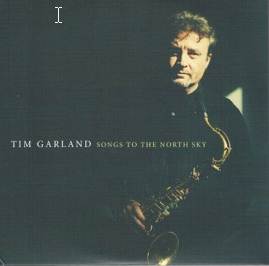 |
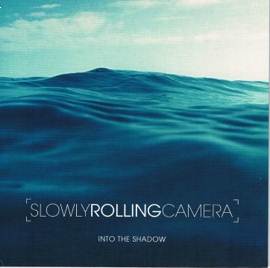 |
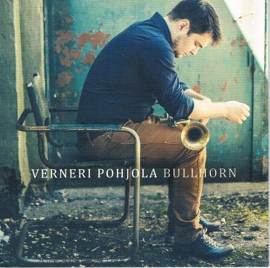
|
Tim Garland - Songs to the North Sky (Edition Records)
|
Slowly Rolling Camera - Into the Shadow (Edition Records)
|
Verneri Pohjola - Bullhorn (Edition Records/Planet)
|
   
|
   
|
   
|
|
Edition Records is a specialist UK label, established in 2008 by pianist/composer Dave Stapleton, and based in Hungerford, Berkshire. With a growing roster of artists in Jazz, Classical and Electronic music the label has been compared by The Guardian newspaper with the famous ECM Records, having ‘. . . a similar sixth sense for emerging innovators.’ Edition’s website displays over fifty albums and is currently releasing these new recordingsOf interest to jazz fans is UK saxophonist Tim Garland’s double CD Songs To The North Sky, the first disc of which is by his expandable trio Lighthouse. Pianist Gwilym Simcock, a standout from the 2012 collection is absent here, but three different players individually supply inventive keyboards: Jason Rebello, John Turville, and Geoffrey Keezer. Long-term associate, drummer Asaf Sirkis with his custom percussion kit of North African and Middle Eastern extraction contributes importantly on both discs. Guitarist Ant Law appears on four tracks, soloing well on Yes To This followed by Turville’s incisive piano leading into Garland’s thematic finale
Disc two, utilising the Royal Northern Sinfonia Strings, begins in a more pastoral vein and has Garland improvising strongly in a romantic mode. The second disc also has some virtuosic bass work from the New York based John Patitucci, often as a continuum between some of the fifteen tracks. This is a descriptive mix of symphonic arrangements with Garland’s narrative lead and his interpretative swinging, jazz-flavoured solos on soprano or tenor sax
The evocatively named group Slowly Rolling Camera features vocalist Dionne Bennett, along with the label’s founder Stapleton on fender Rhodes and synths, plus drummer Elliot Bennett and electronics by Deri Roberts. The four original tracks are electronic impressionist soundscapes using orchestral sweeps and additional instruments provided by another twelve musicians. The dense arrangements, topped by Bennett’s often soul-infused vocals – at times reminiscent of Tina Turner – owe something to the UK group Cinematic Orchestra, with a similar pop culture derivation
Another of Edition’s new releases is Bullhorn a recording of a quartet from Finland playing compositions by the leader, trumpeter Verneri Pohjola. The style is contemporary, lyrical Euro-jazz and several guest artists add to the quartet of trumpet, piano, bass and drums. One of these is Jussi Kannaste on tenor sax who appears on Girls of Costa Rica to bulk out ensemble work and provide a dynamic solo. Pohjola’s trumpet is fluidly melodic and constantly inventive throughout the album and Aki Rissanen on piano is an excellent accompanist supplying well-placed substantial chords and interweaving phrases
These new albums from Edition help to demonstrate the company’s stated ideal of sharing world-class creativity with music lovers globally, one person at a time
|
John McBeath
Previously published in The Australian January 2015 |
| Back to Index |
|
Uncompromising Expression – Blue Note
By Richard Havers
Thames & Hudson, 400pp, $95
This official history commemorates the 75th anniversary of the famous US jazz record label Blue Note and qualifies as a finely produced coffee table volume. It will need a sturdy table though; it weighs over 2kgs.
Richard Havers tackles the encyclopaedic task with enthusiasm and authority, although the writing jumps around chronologically. Blue Note’s recordings range from boogie-woogie piano and the swing of the 1930s through bebop, funk and fusion, to the label’s eclectic current releases. The epoch is portrayed in images including historical photographs, reviews, program notes, press releases, album covers, and Havers’s narrative.
Blue Note’s founder Alfred Lion came from a cultivated Jewish background in Berlin first hearing jazz as a teenager in 1924 by an African-American band. During Hitler’s rise in the 1930s black musicians, Jewish musicians, and entarte musik –‘degenerate music’ otherwise known as jazz, were banned. Lion fled Germany arriving in New York in 1936.
Havers describes New York’s famous thriving venues and the musicians like Duke Ellington, Tommy Dorsey, Louis Armstrong, Benny Goodman, and a host of others all regularly broadcasting on radio.
Pianists Meade ‘Lux’ Lewis and Albert Ammons were appearing at a new venue that had no colour bar. Named Café Society, it opened with the slogan: ‘The wrong place for the right people.’ By January 1939 Lion had saved enough to afford his first recording session and offered to record Lewis and Ammons for his new label, and Blue Note was born. The pair specialised in the immensely popular boogie-woogie piano, a twelve bar blues with a consistent, rhythmic bass pattern. Lion booked a studio and the two pianists completed nineteen takes, including Ammons’s iconic Boogie Woogie Stomp. Two double-sided 12 inch 78’s were released in March.
Needing finance Lion enlisted two writers from the Café Society crowd, Max Margulis and Emanuel Eisenberg naming them as ‘sponsors’ of Blue Note recordings one and two (BN 1 and BN 2). Sculptor Martin Craig, designed the first Blue Note label from Lion’s brief: ‘Make me something modern.’
Five weeks later Lion recorded BN 3, BN 4, and BN 5 – traditional blues and swing – by the Port of Harlem Jazzmen. On clarinet was Sydney Bechet who recorded a solo version of Summertime, released on BN 6, which became a pivotal moment. It was a beautiful rendition destined to be the label’s first hit, selling 30 copies per day in one record shop alone. Pianist Earl ‘Fatha’ Hines cut two high quality BN solos, further enhancing the label’s growing reputation.
An old friend – photographer Francis Wolff – fled Berlin for New York and began assisting Lion. There were only five more sessions before Lion was called up by the US army in 1942. Blue Note went into hibernation. Discharged in 1943 Lion opened a new Manhattan office where both he and Wolff worked full time.
Throughout 1943 and early 1944 various groups were recorded: pianist James P. Johnson, clarinetist Edmond Hall’s Quintet and traditional pianist Art Hodes with the Chicagoans. In July of 1944 the label moved towards modernity with saxophonist Ike Quebec who brought new ideas to the swing format. For the next two years there was more Art Hodes and Sidney Bechet.
By 1947 bebop was on the rise and male vocalist Babs Gonzales with a group featuring Tadd Dameron on piano, recorded Oop-Pop-A-Da for Blue Note, and it became a bop standard. Lion met pianist Thelonious Monk in 1947 who, aged 30, made his debut recordings for Blue Note and as Havers says: ‘. . . jazz would never be the same again.’ In the first of Monk’s sessions was 28 year old drummer Art Blakey who would later become synonymous with Blue Note.
Monk’s first release did not sell well, his second disc, Round About Midnight did better, and between 1947 and 1952 Monk recorded over a third of his compositions for Blue Note. Lion recorded certain artists whether they sold or not, stating that his company was not primarily about making money, but about quality.
Blue Note’s greatest period from the mid-fifties to the mid-sixties was notable for its artistic album covers – now on LPs – using photography by Wolff and designs by Reid Miles. Superb recording quality was provided by Rudy Van Gelder. During this era the recorded artists make a legendary list. Art Blakey, Bud Powell, Sonny Rollins, Wynton Kelly, Miles Davis, Horace Silver, Clifford Brown, Herbie Hancock, Jimmy Smith, Freddie Hubbard, Wayne Shorter, Ornette Coleman, Chick Corea, Eric Dolphy and Max Roach are just some of the standouts. Six pages are devoted to saxophonist John Coltrane’s only Blue Note album, Blue Train from 1957, regarded as the most outstanding of his early work
.
Alfred Lion suffered a heart attack in 1966 and sold his label to Liberty Records; then United Artists bought out Liberty in 1968. Wolff continued working in the business until he died in 1971 but by then Blue Note was in decline and in 1979 it seemed the last recording was released. However the label made a comeback in 1985 but with varied results. The company functions today with new artists and is re-issuing 100 Blue Note titles commemorating its 75th anniversary.
This is a comprehensive reference book of historical importance, recording and detailing, in often stunning illustrations and explanatory text, the organisers, music and artists who were part of one of the world’s most influential jazz labels.
|
John McBeath
Previously published in The Australian January 2015 |
| Back to Index |
|
| Archives 2014 |
| Archives 2013 |
| Archives 2012 |
| Archives 2011 |
| Archives 2002-2010 |
|






































